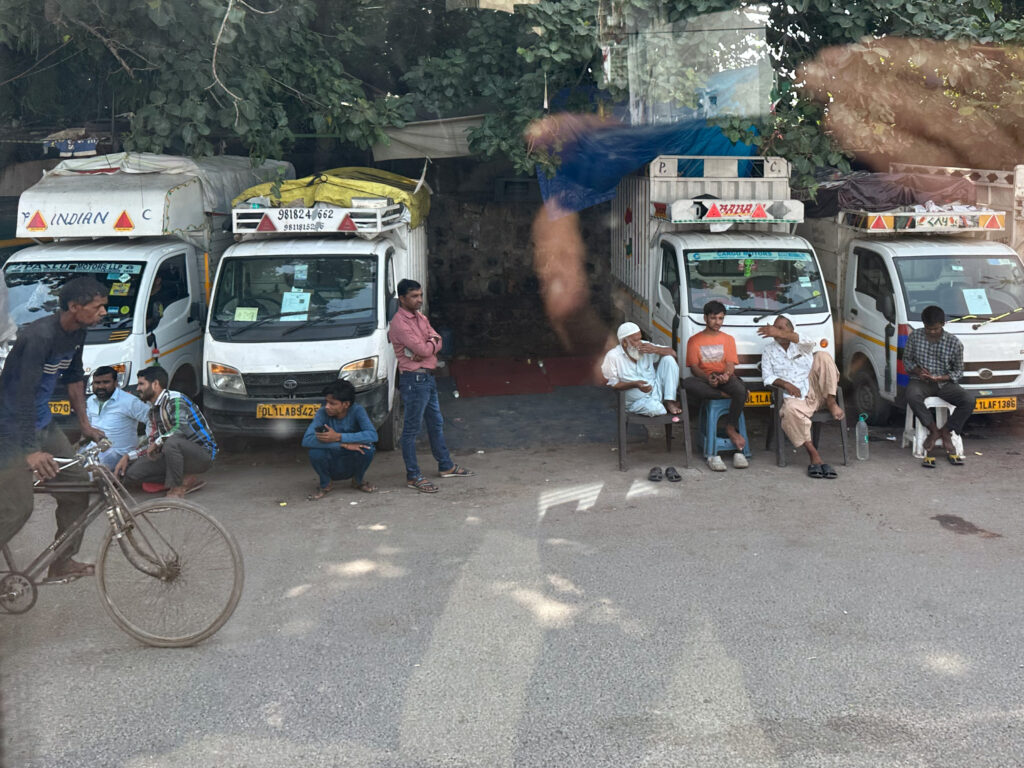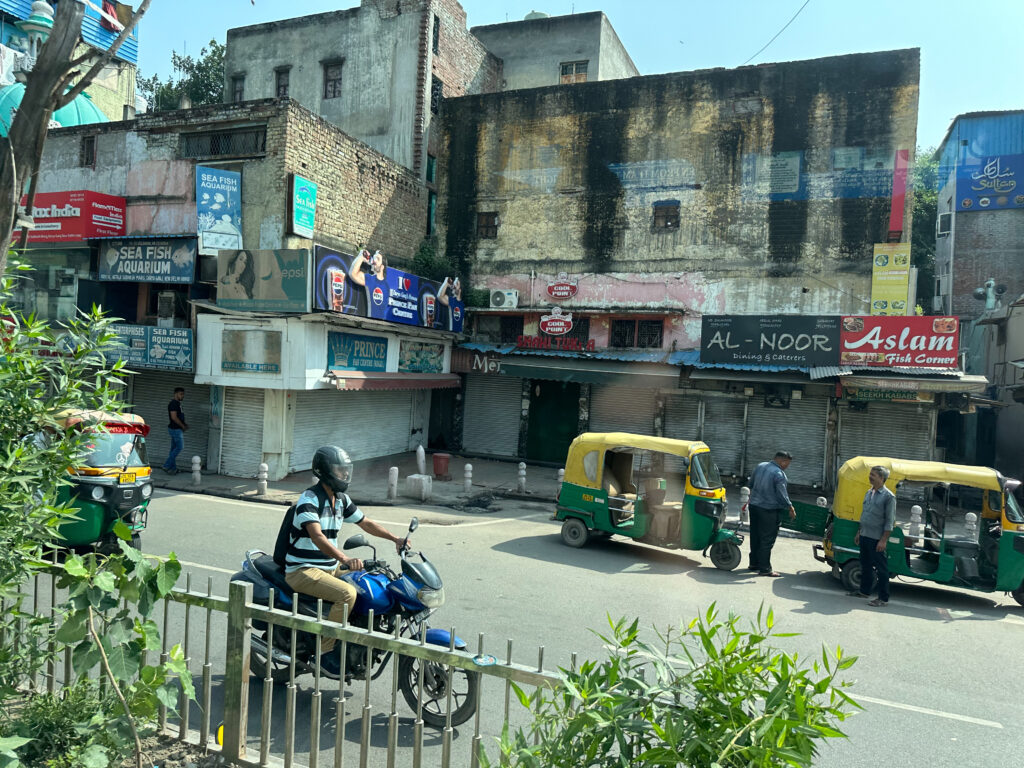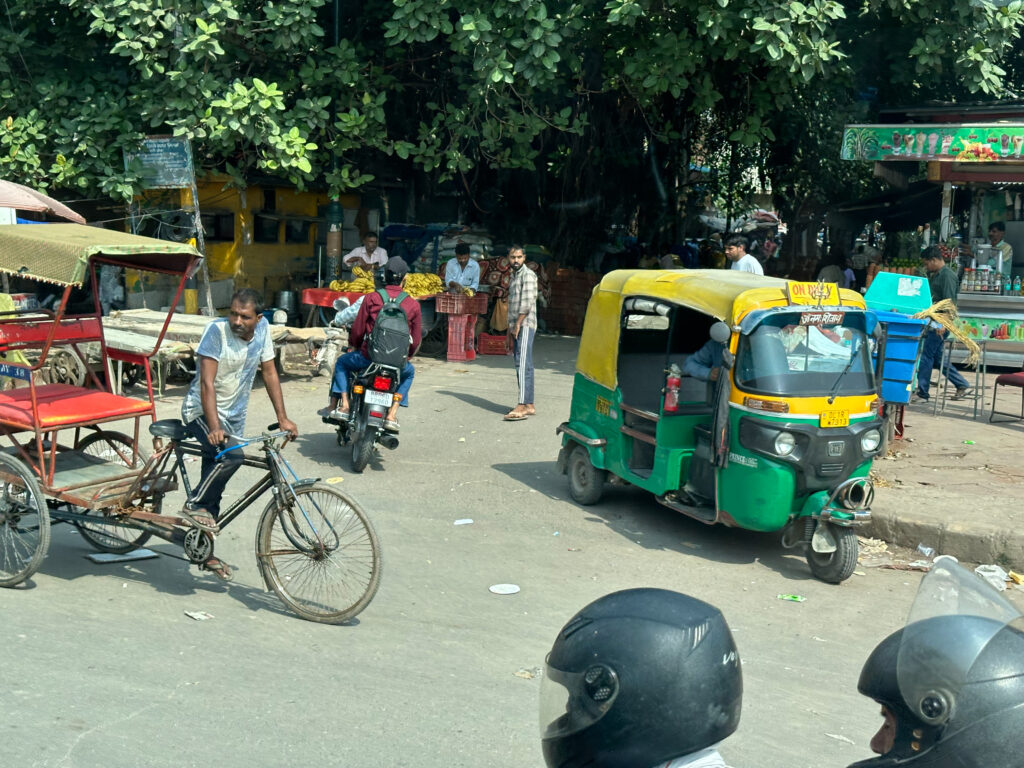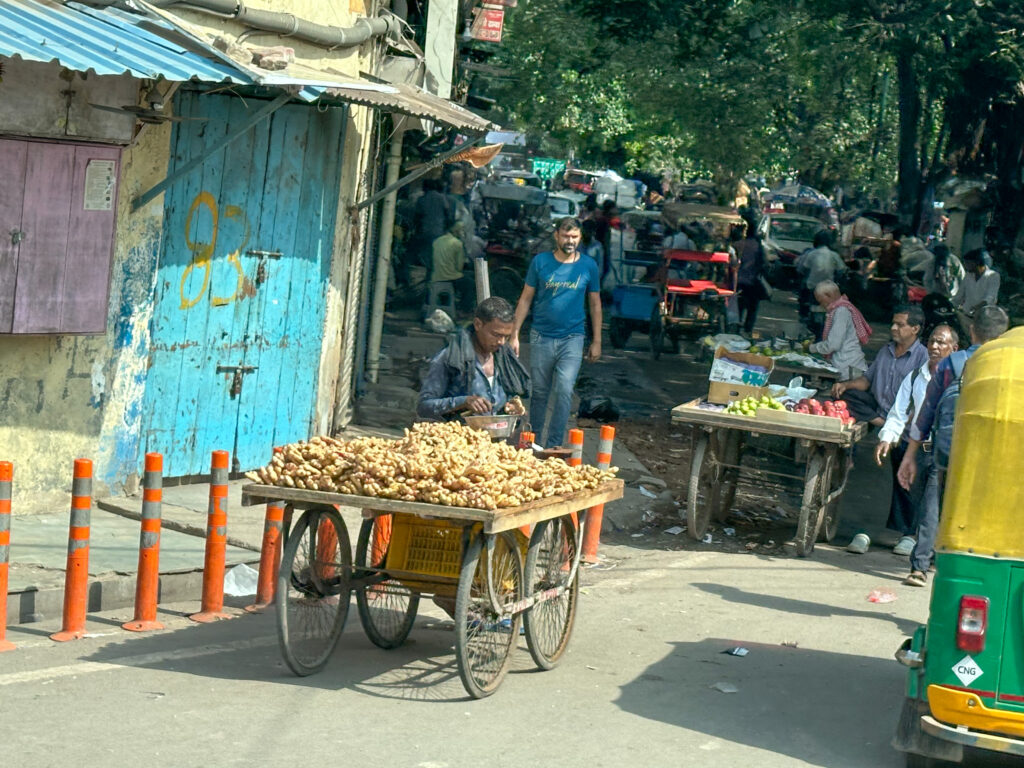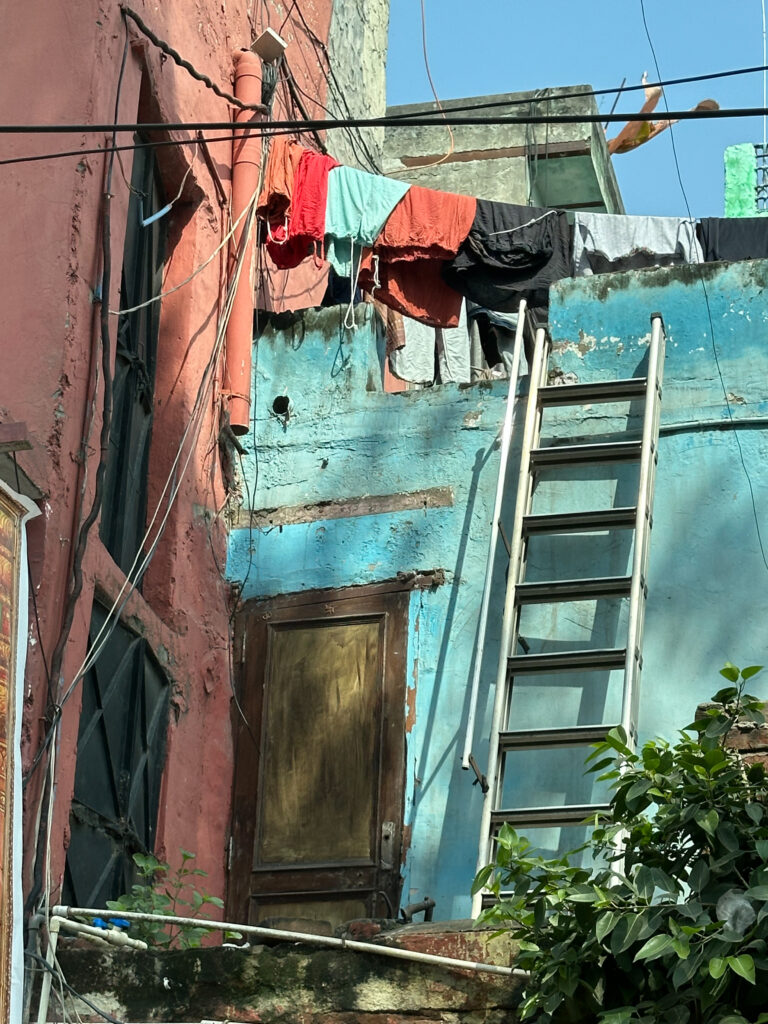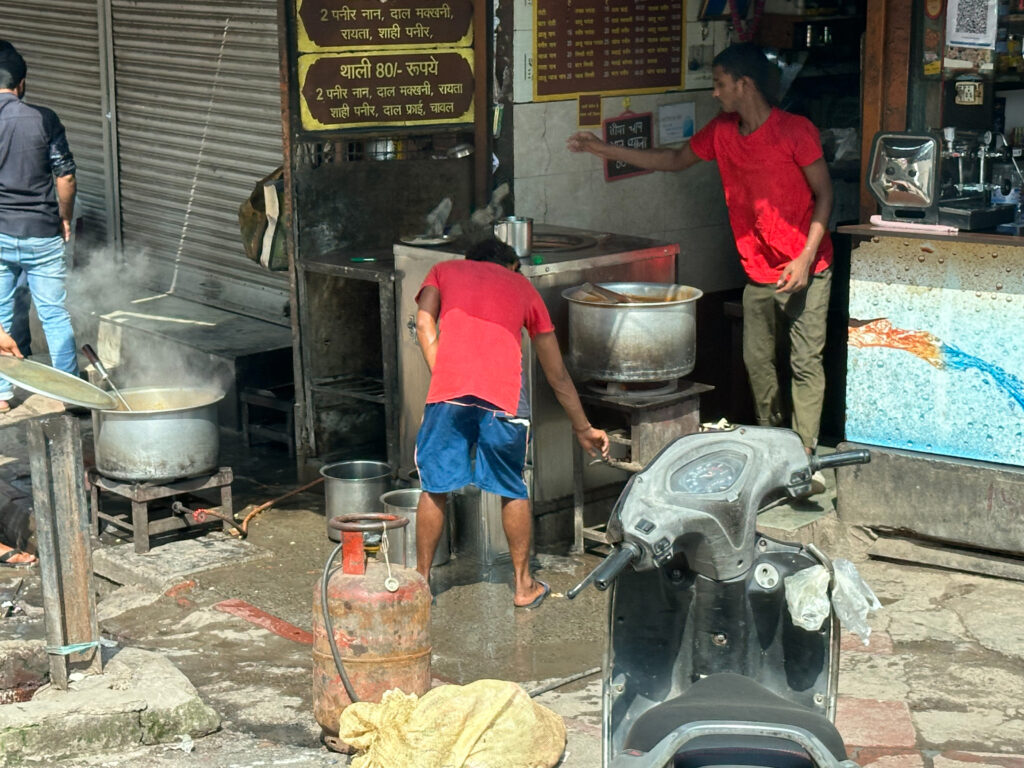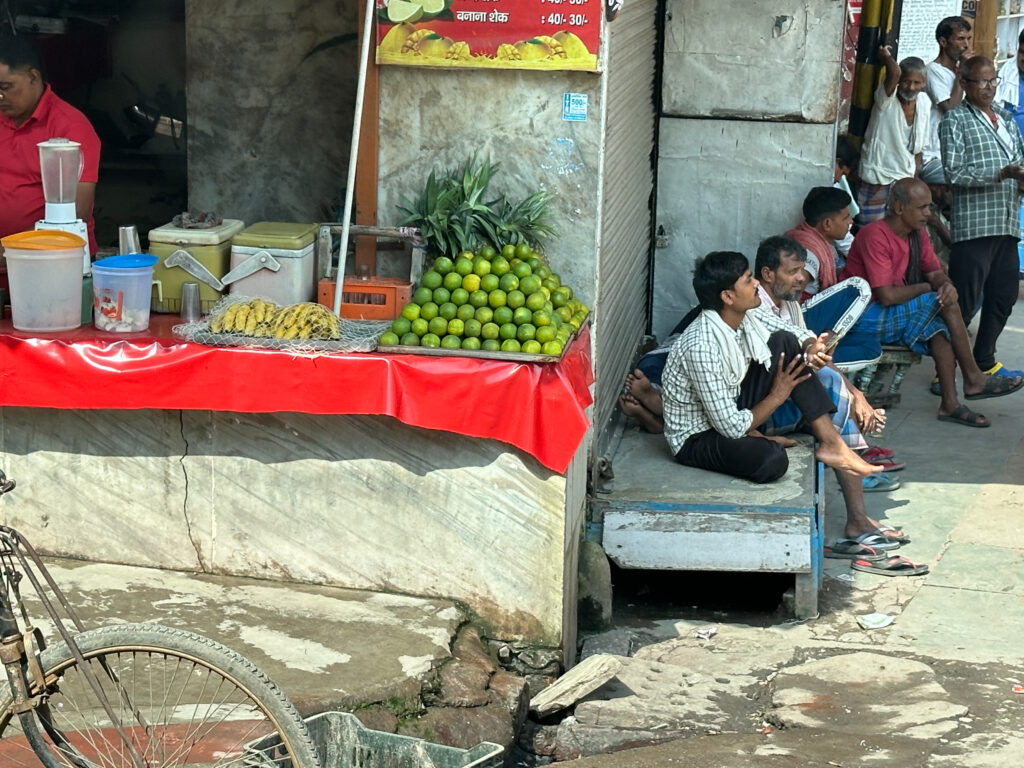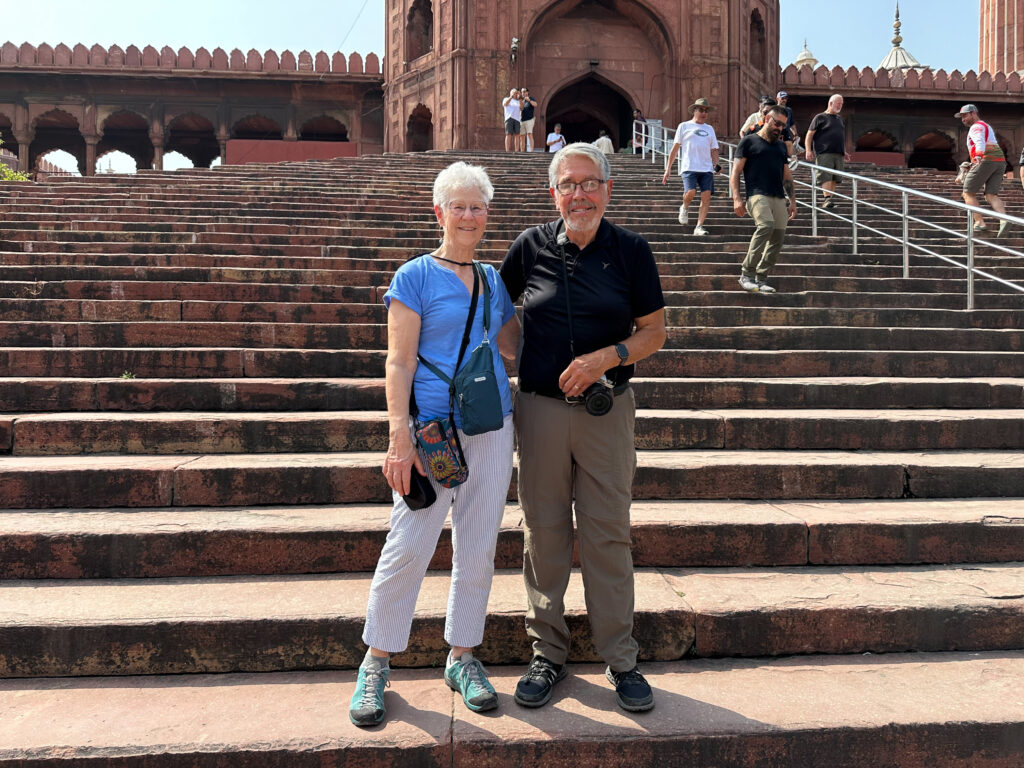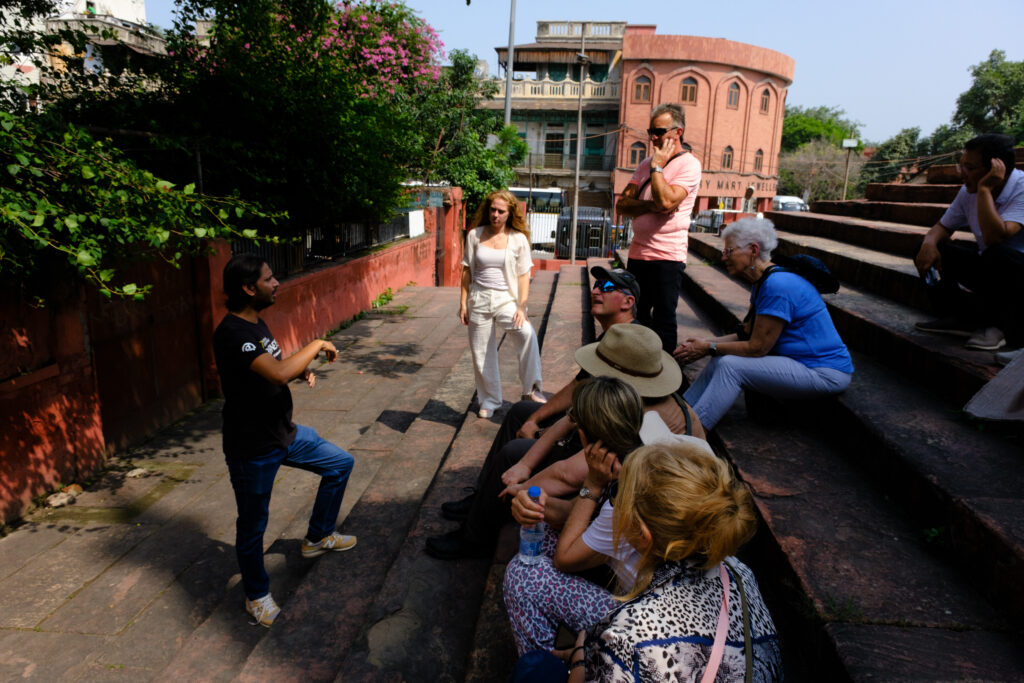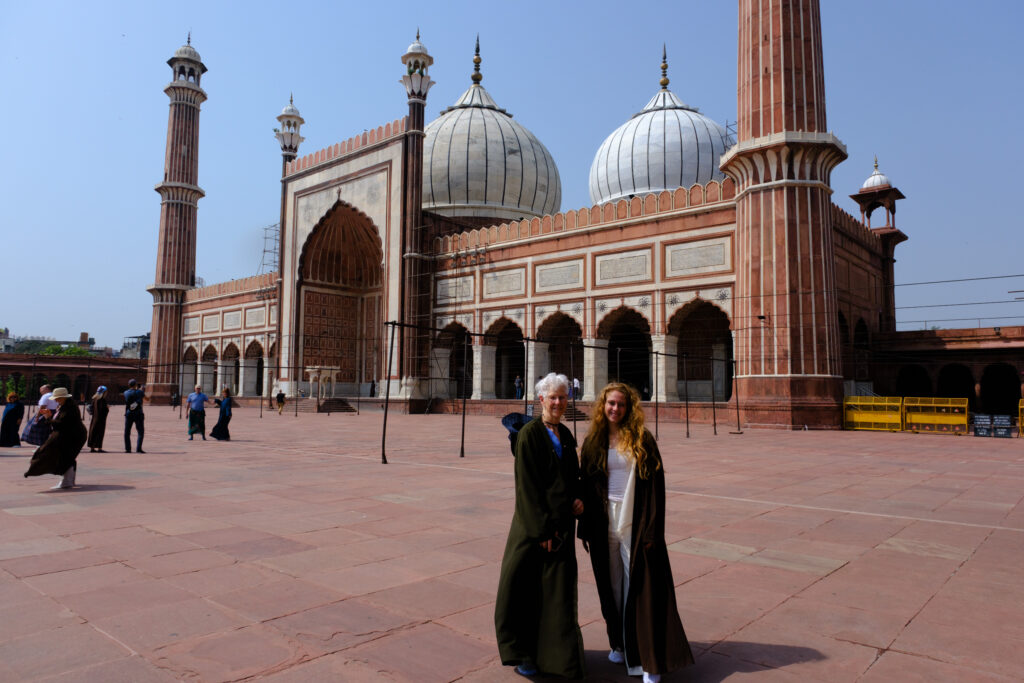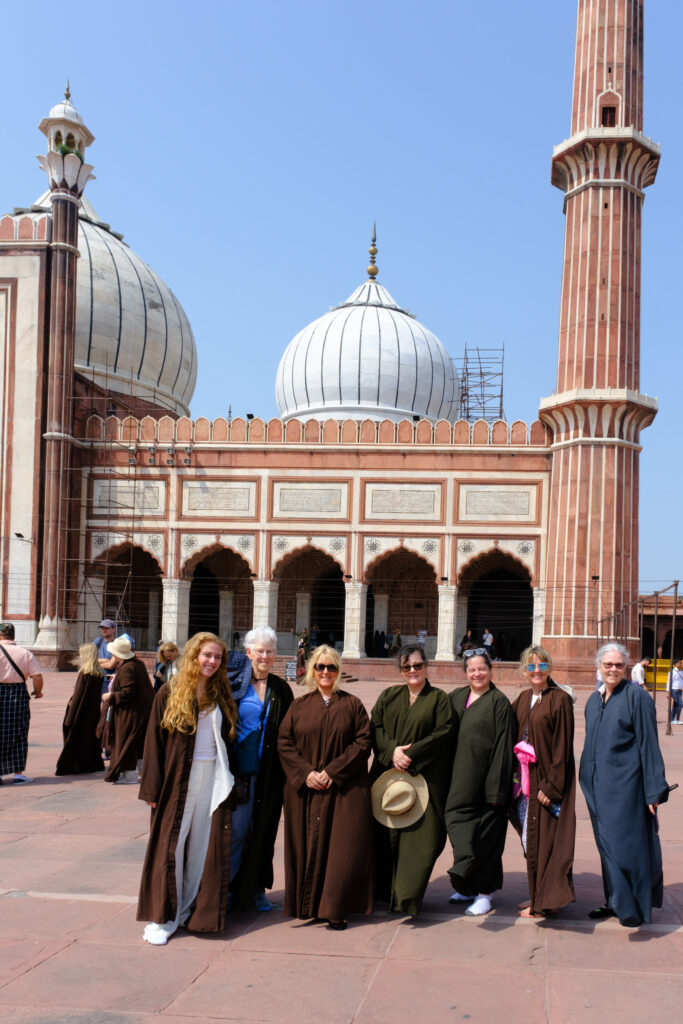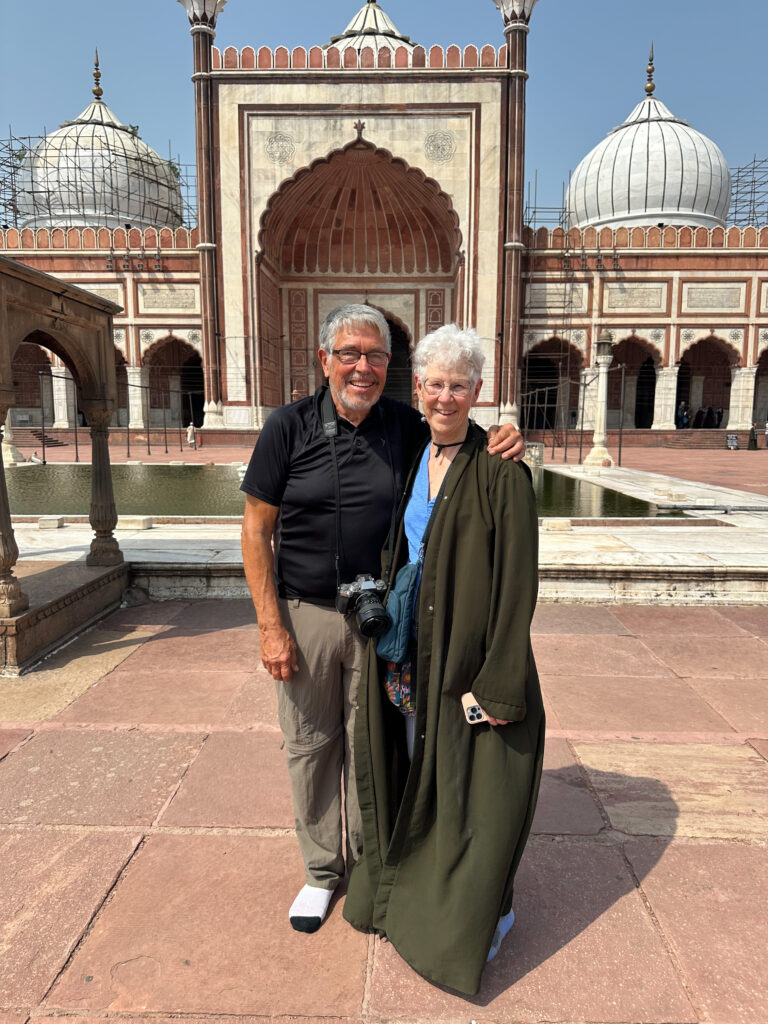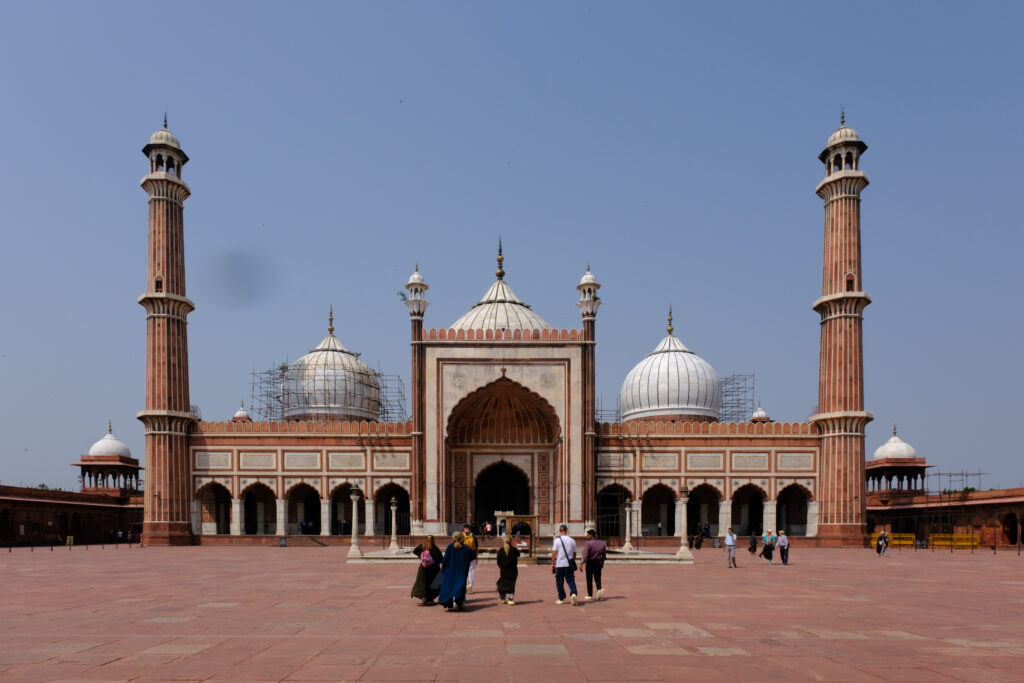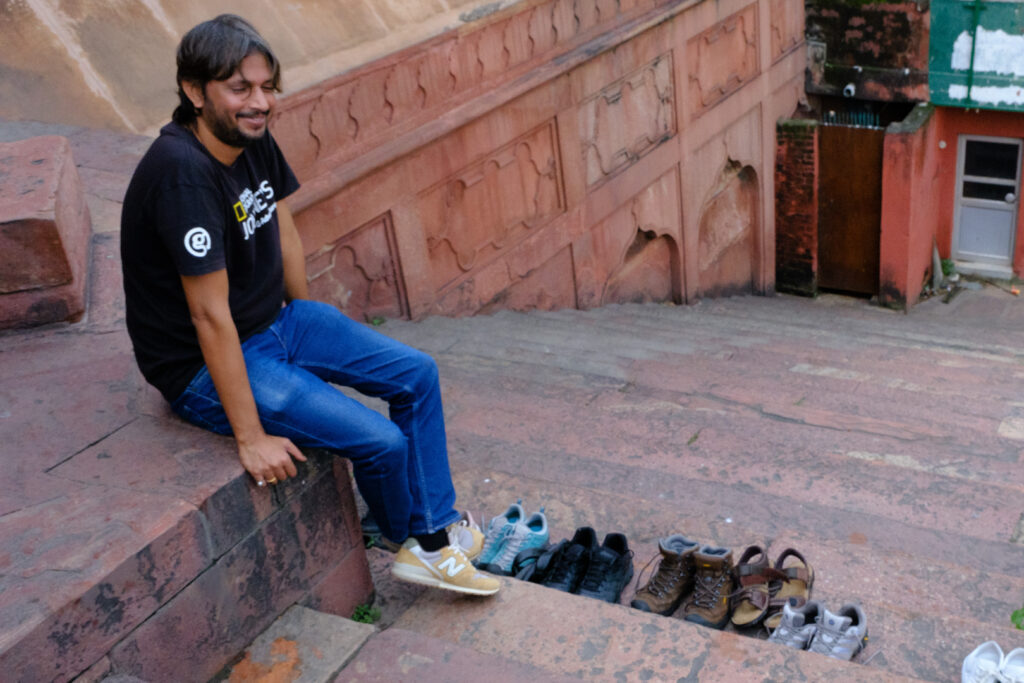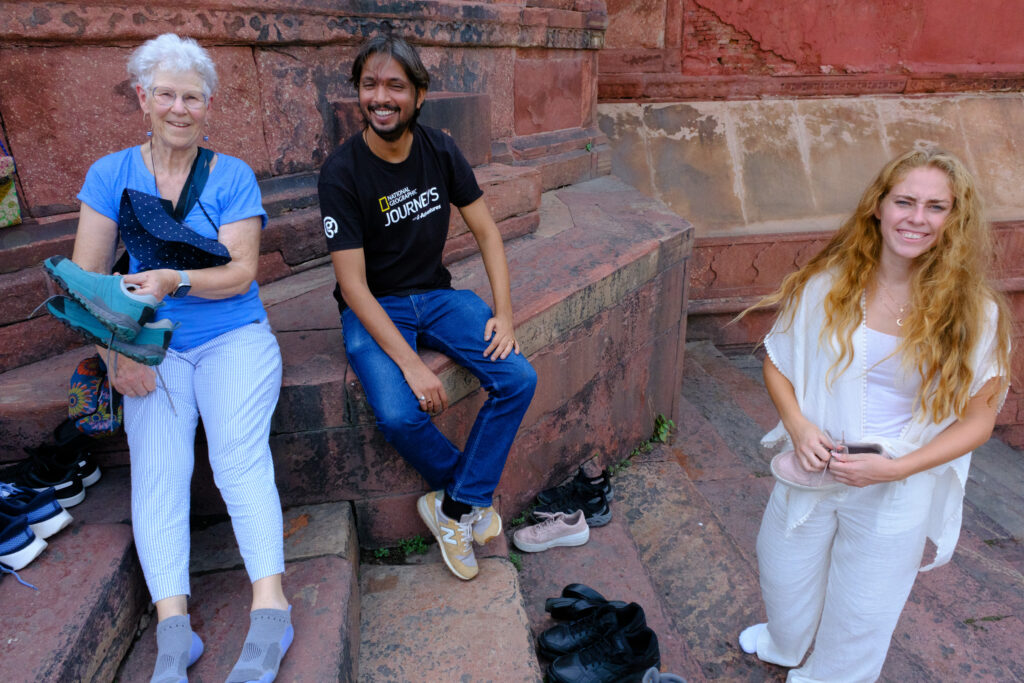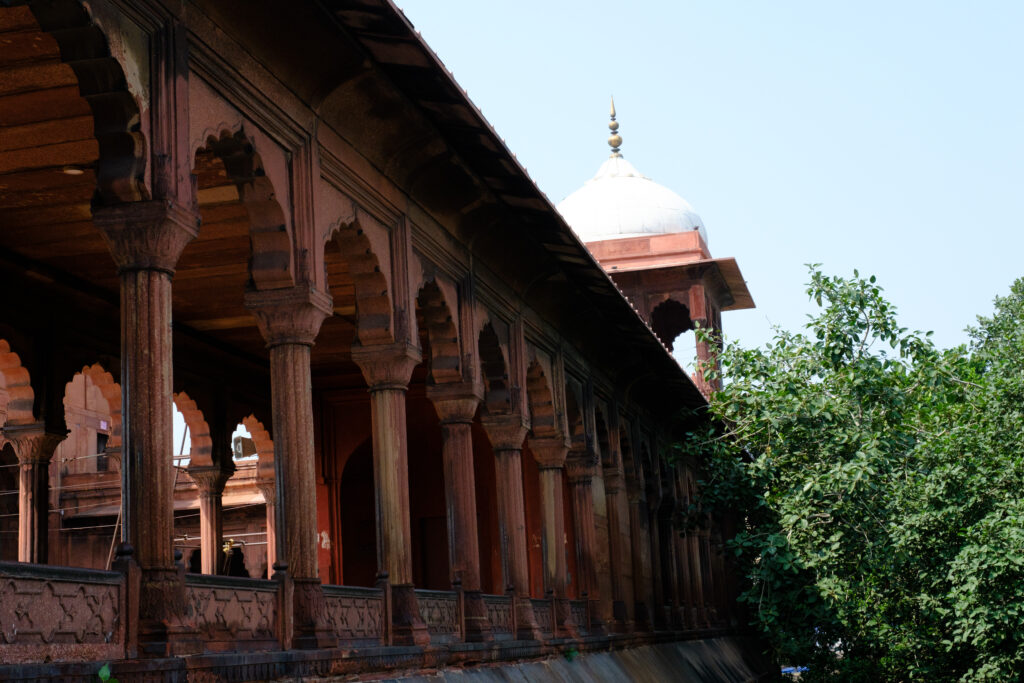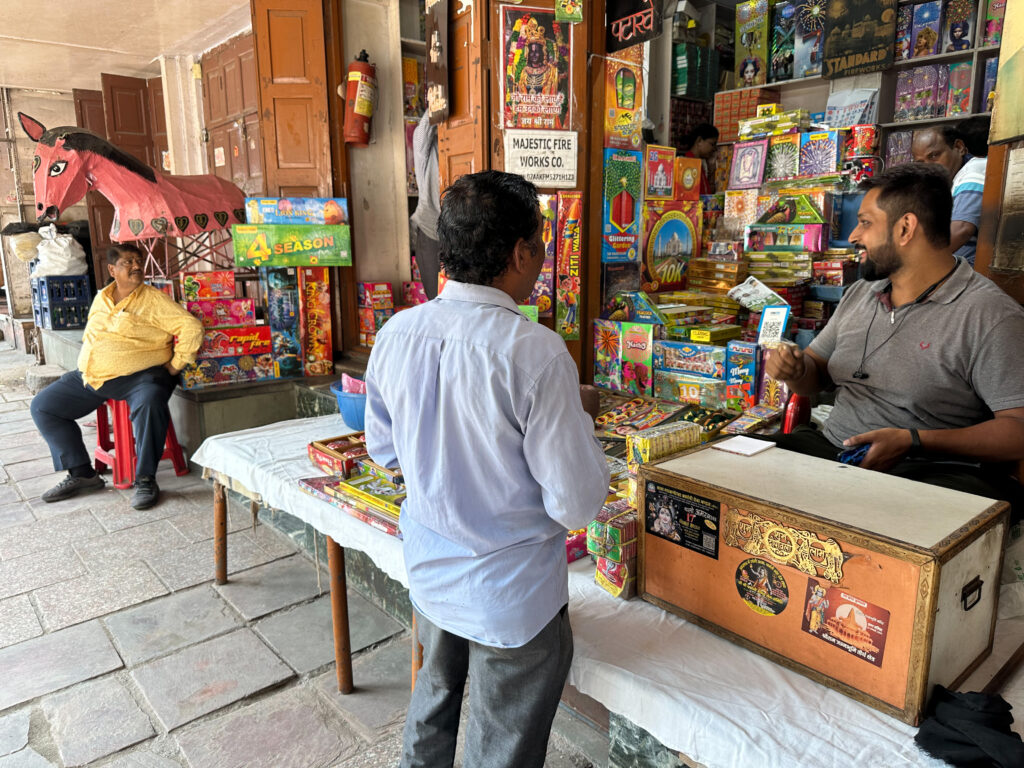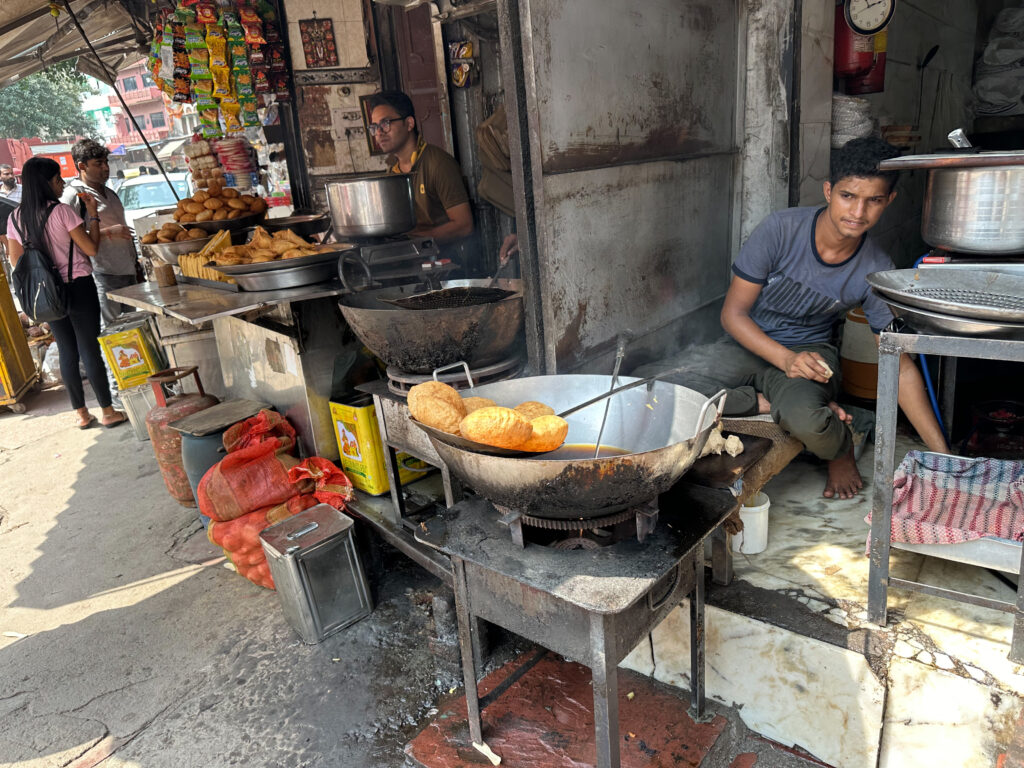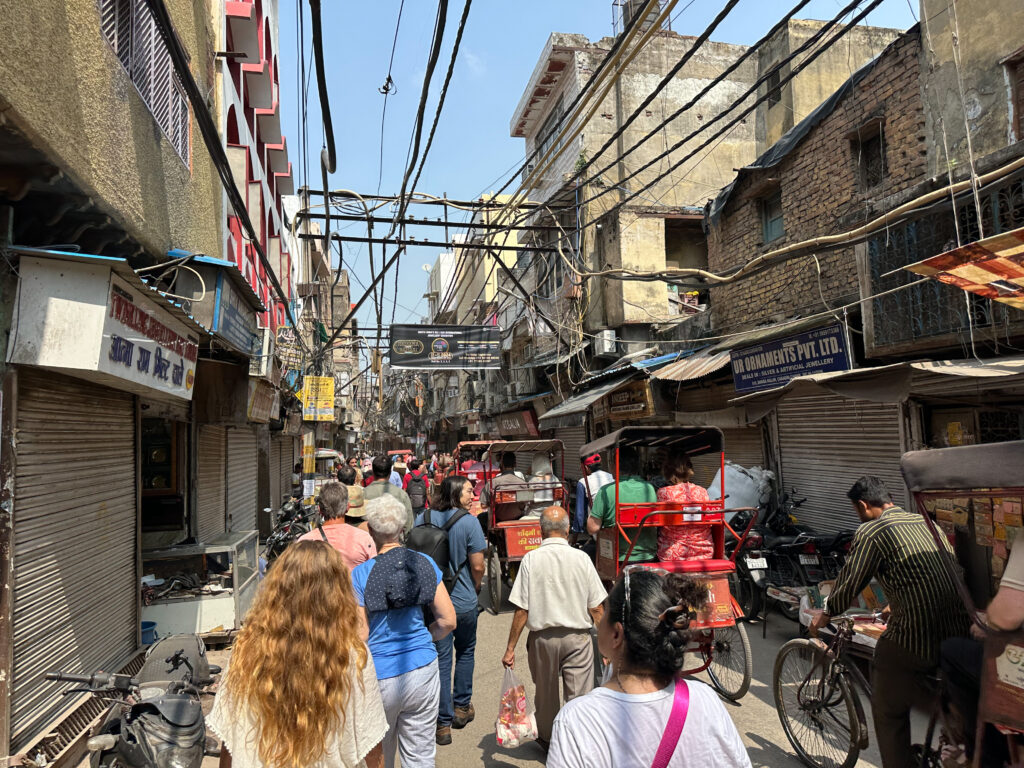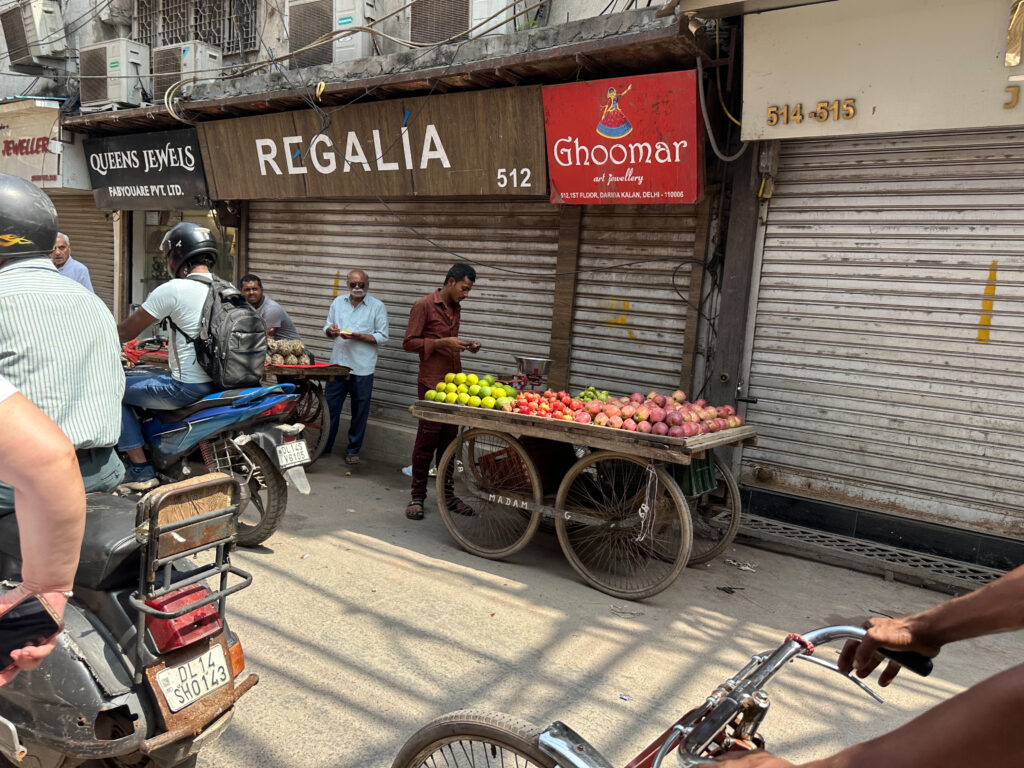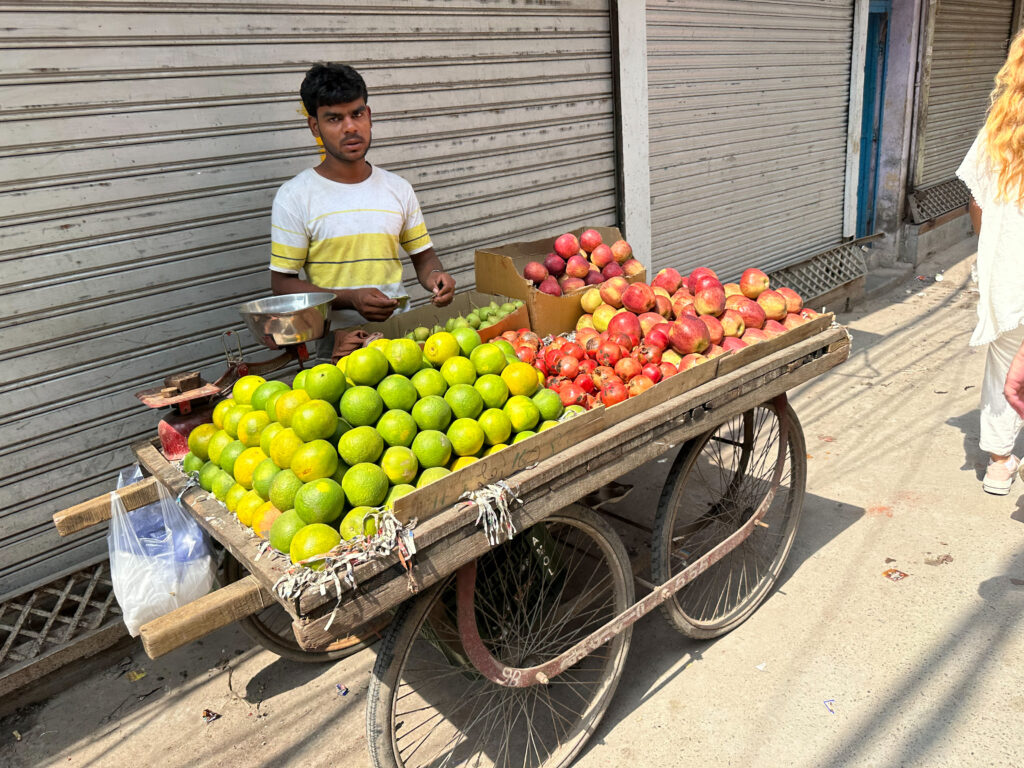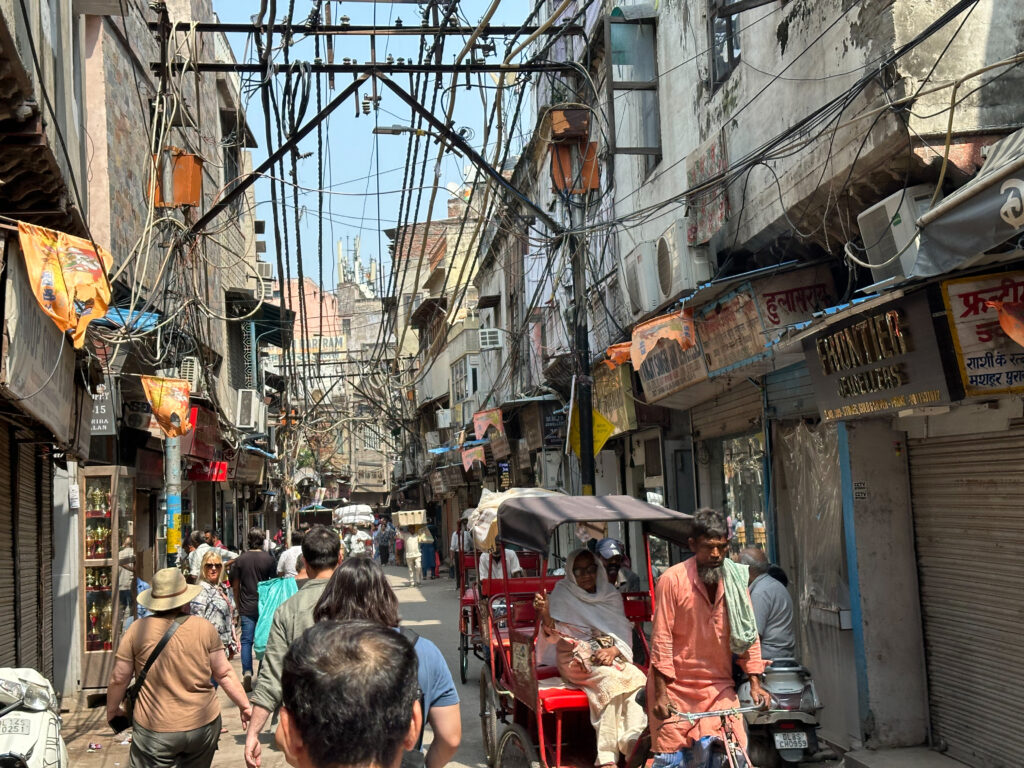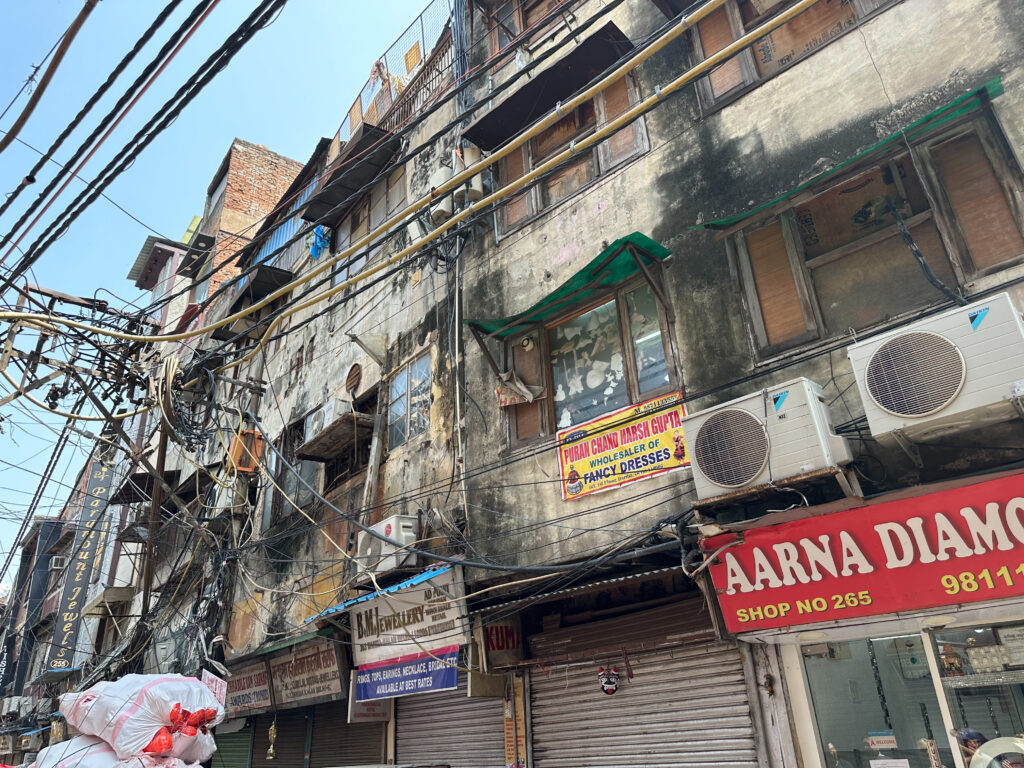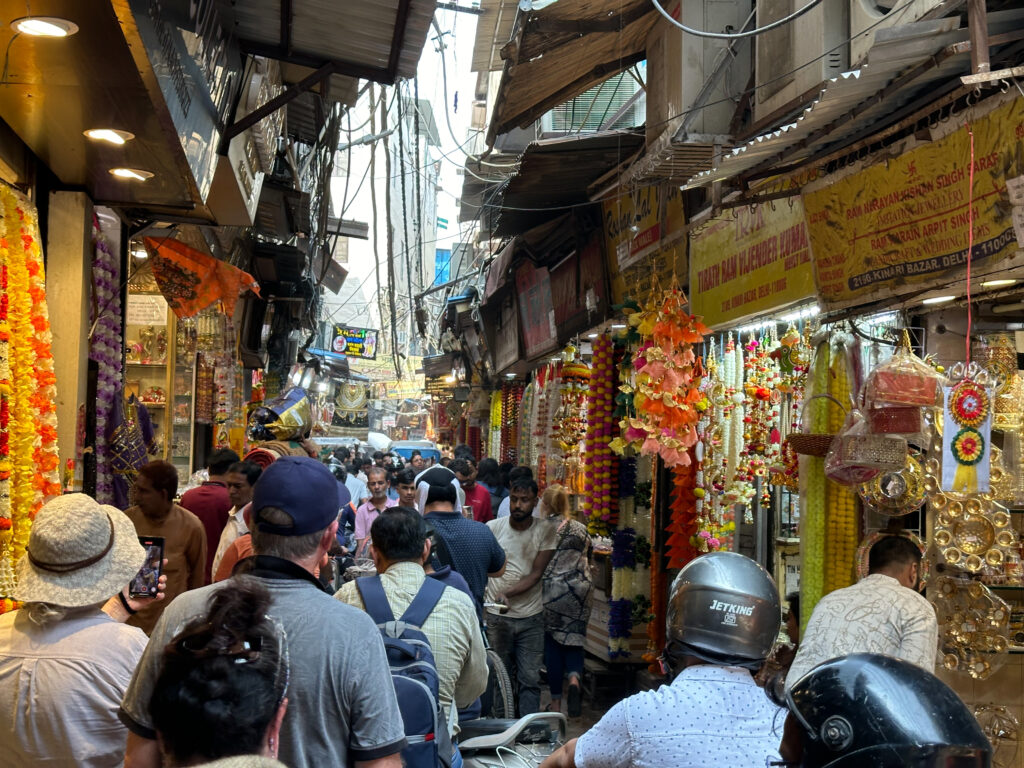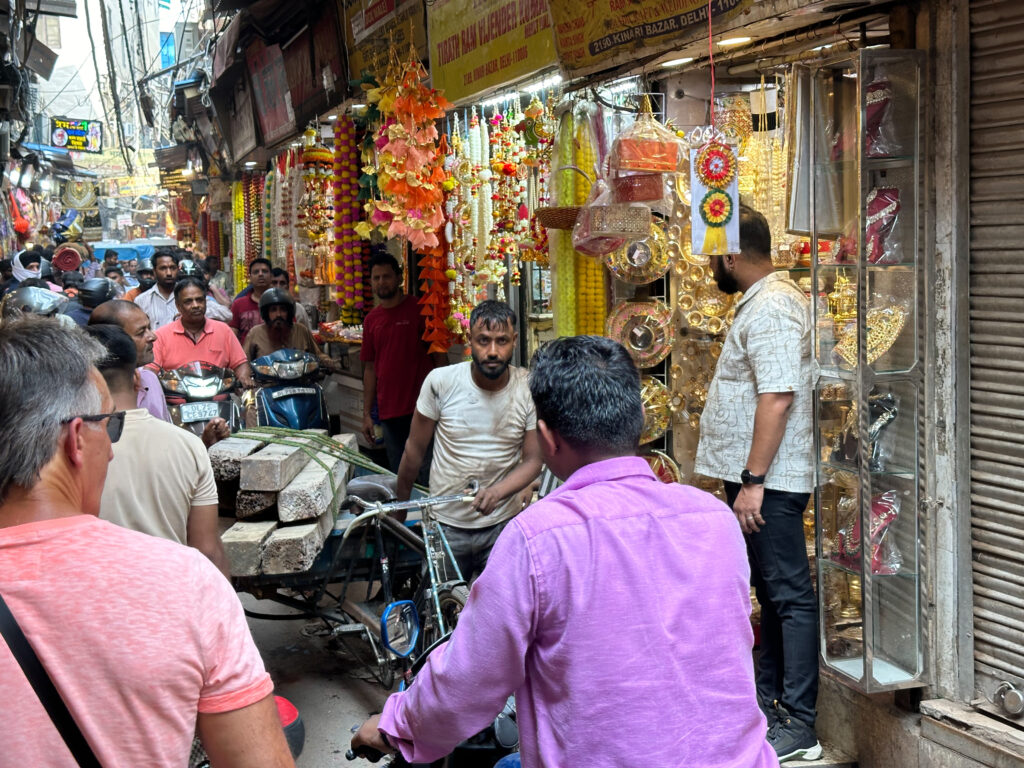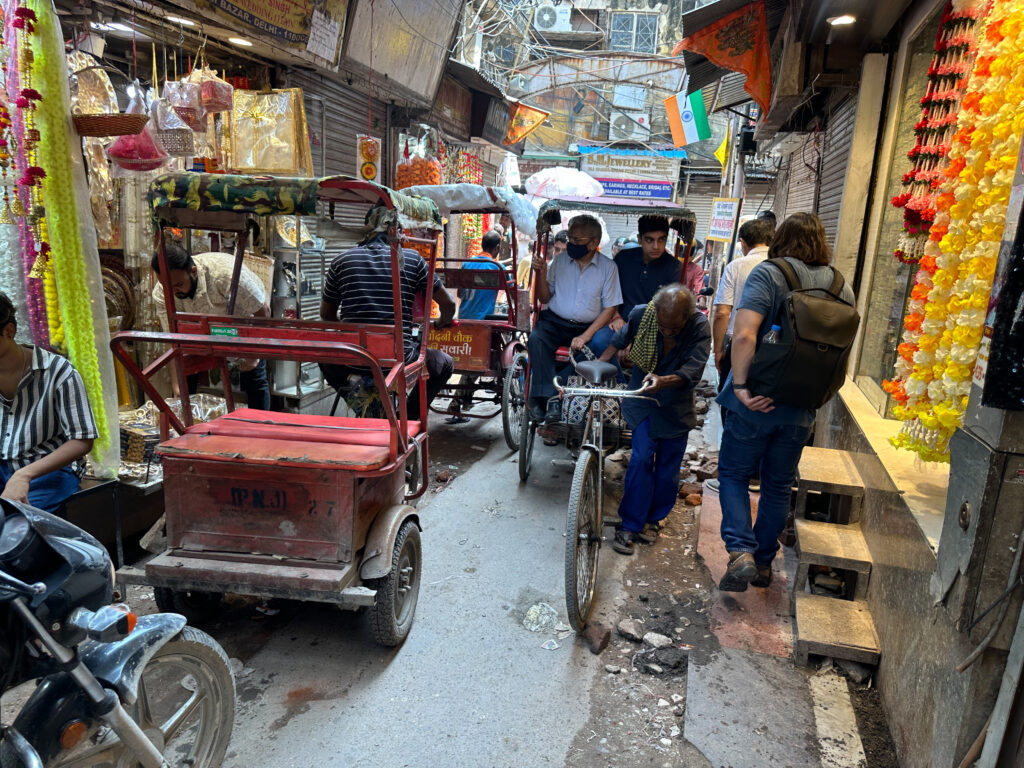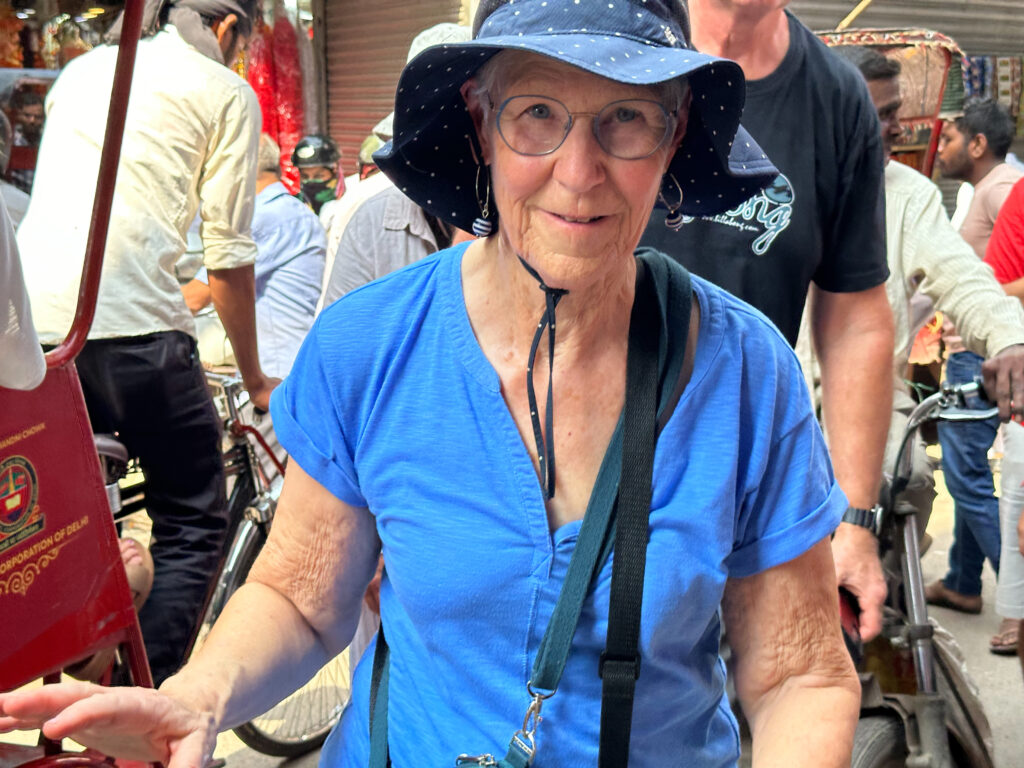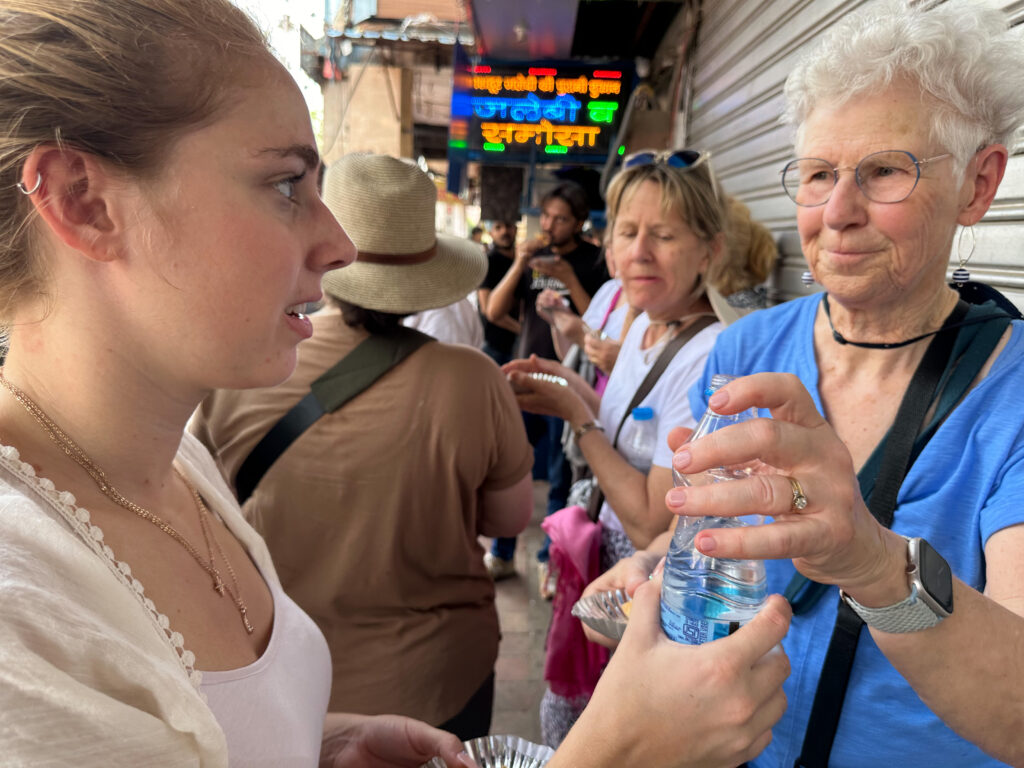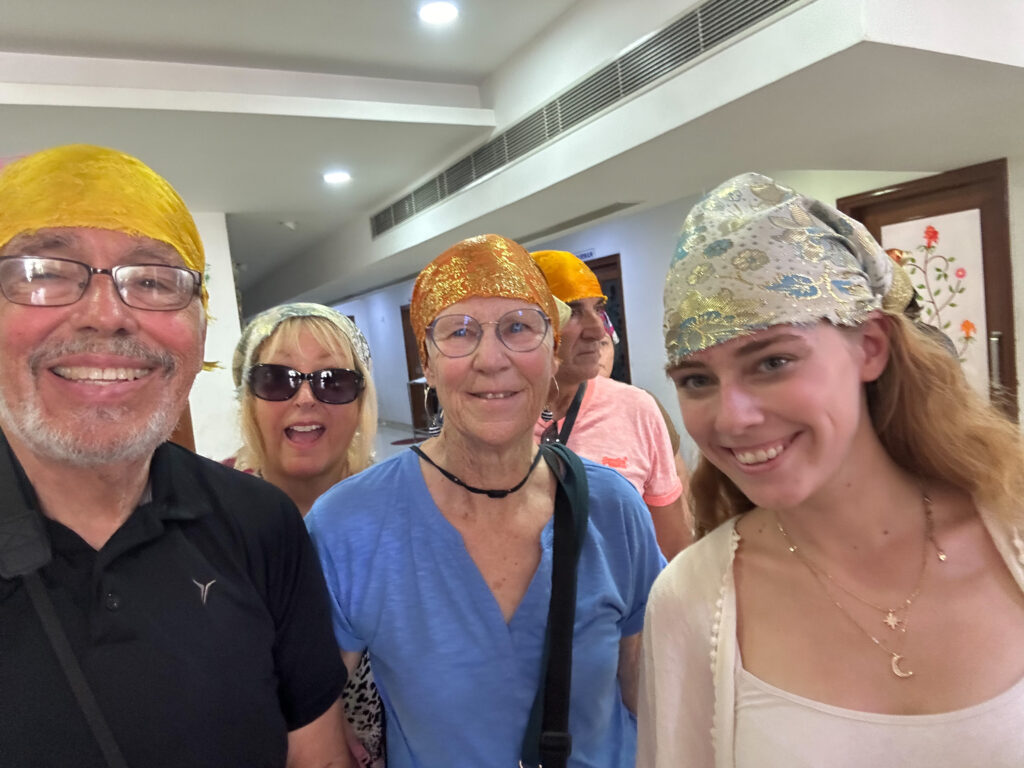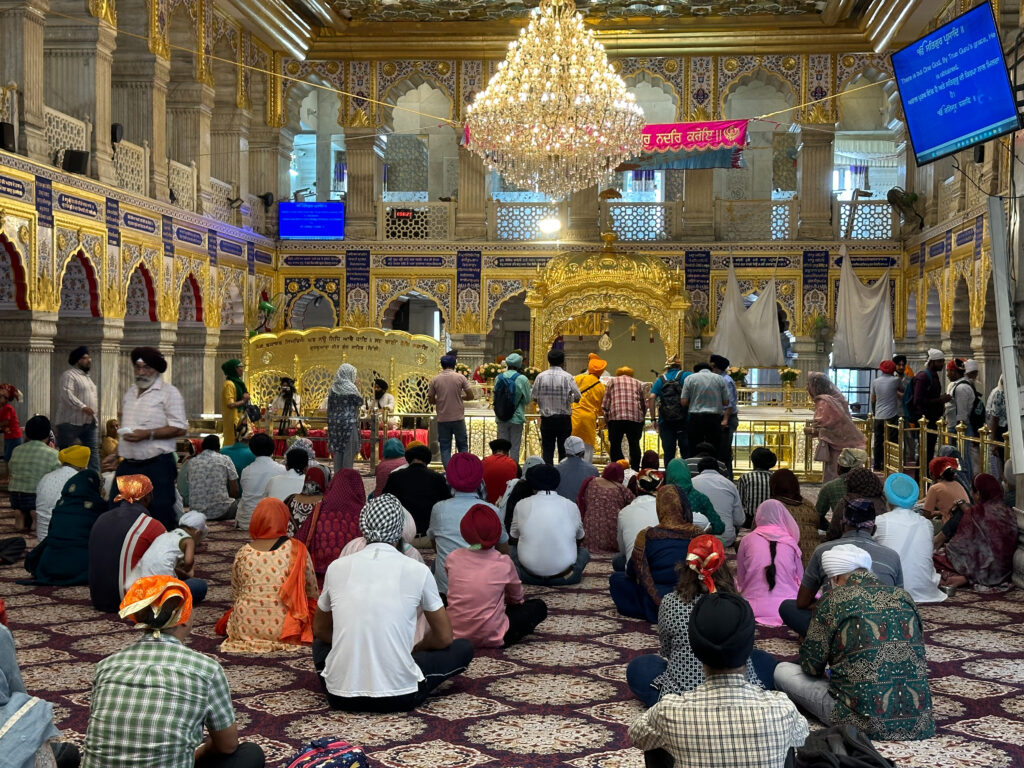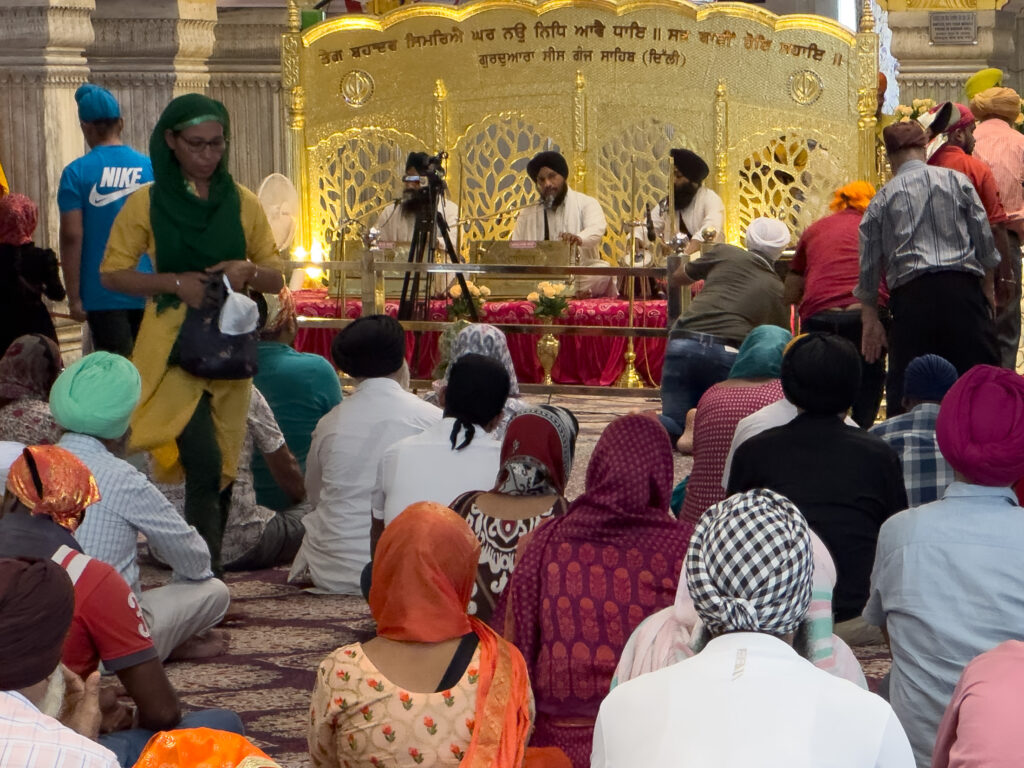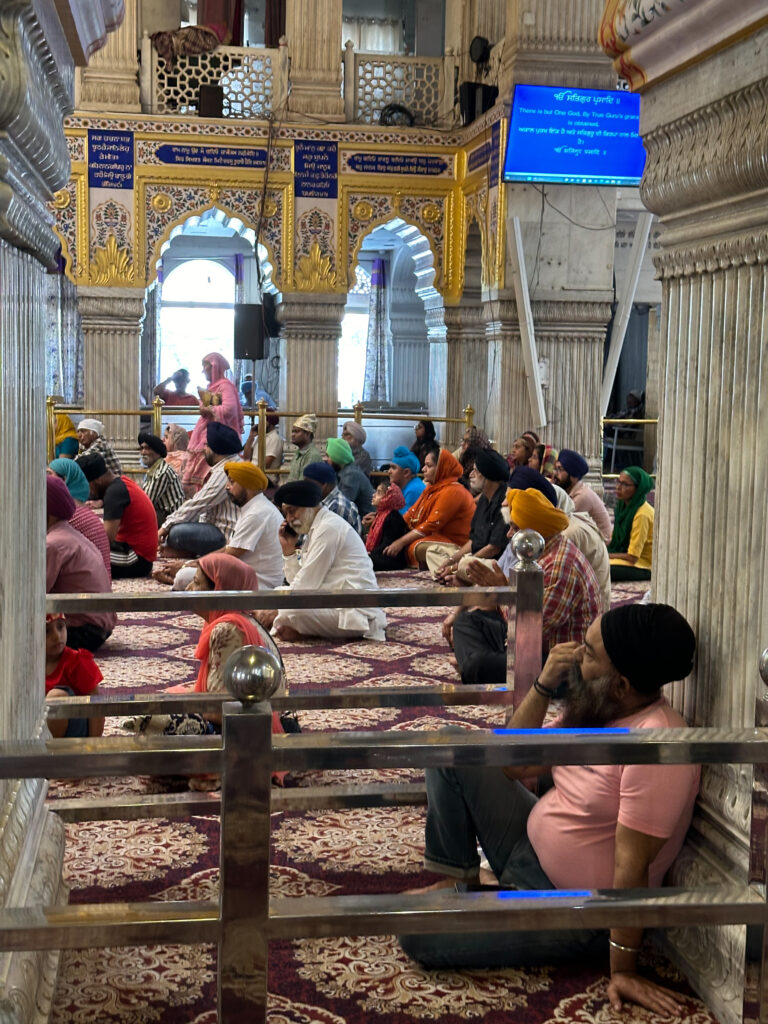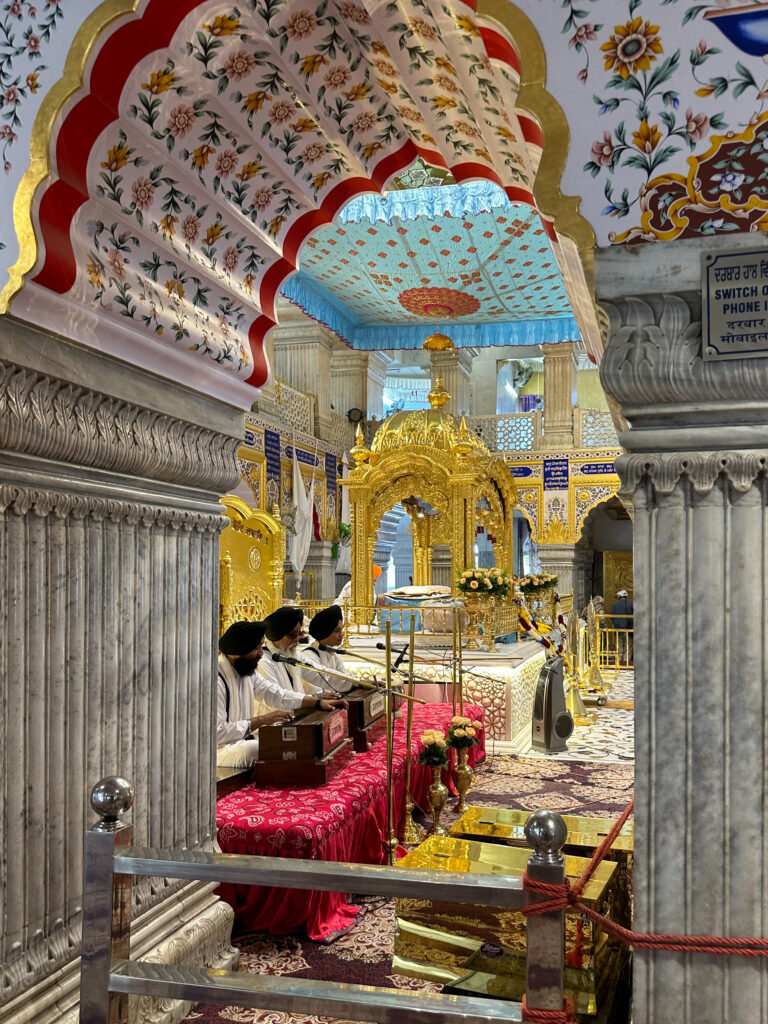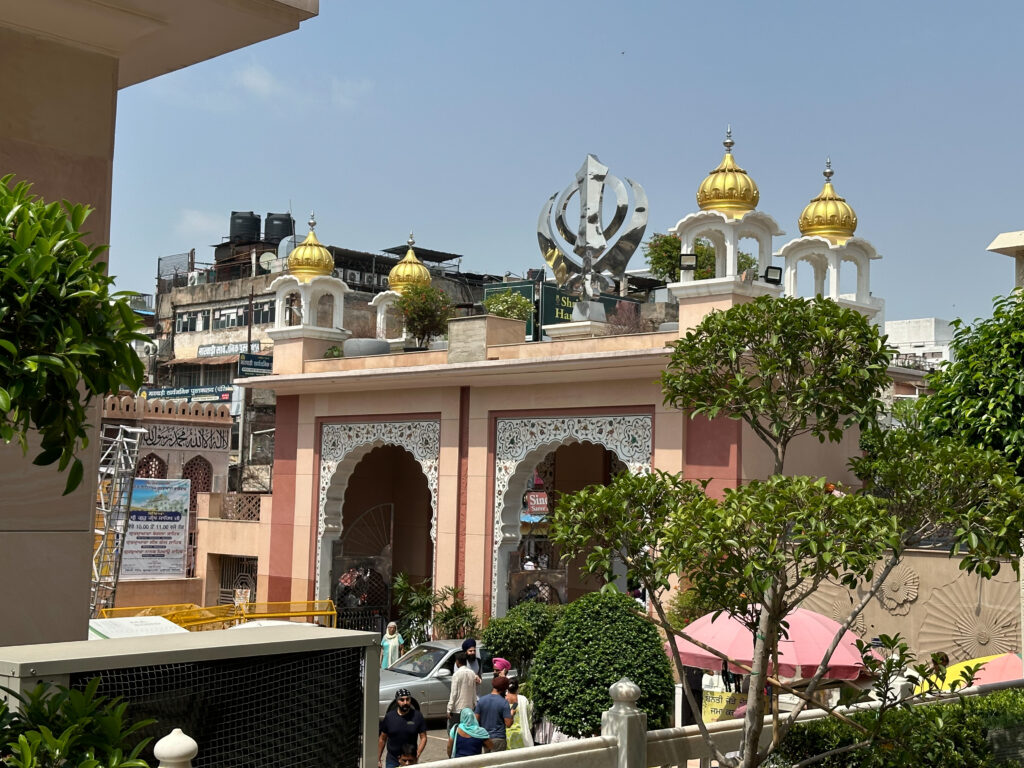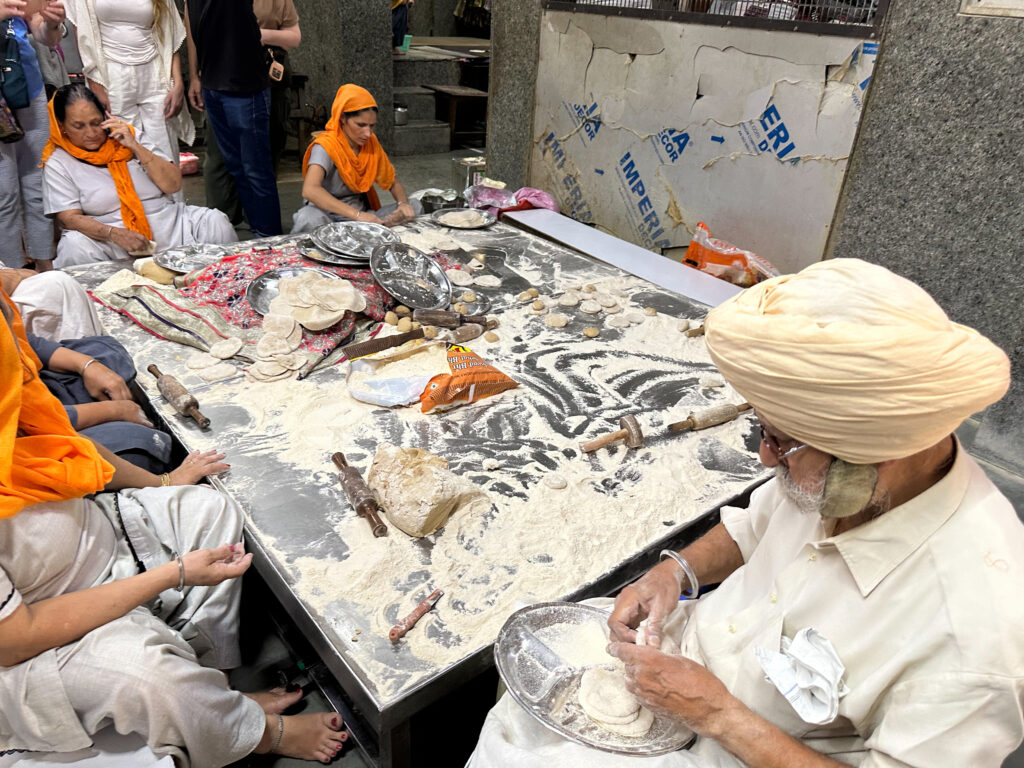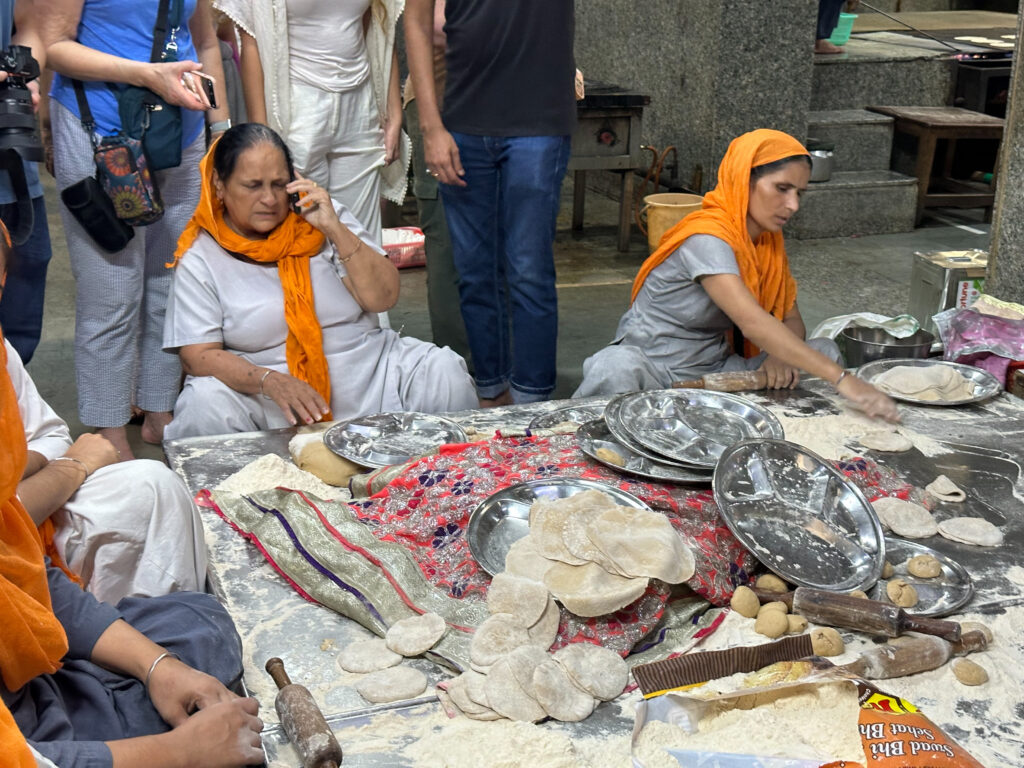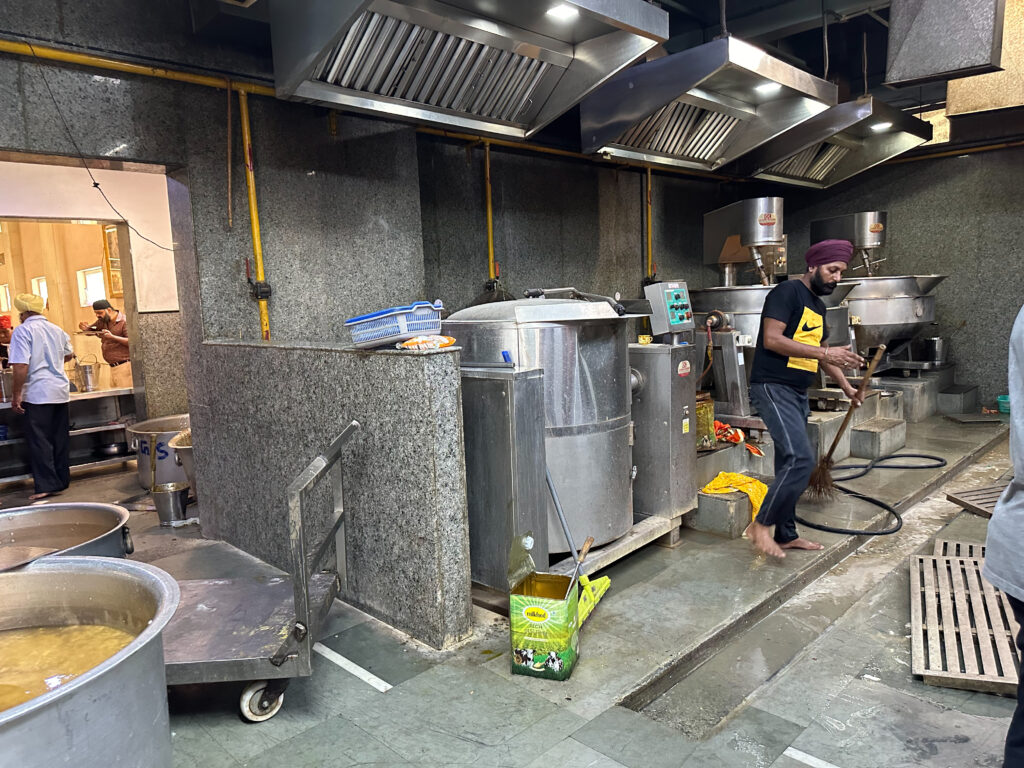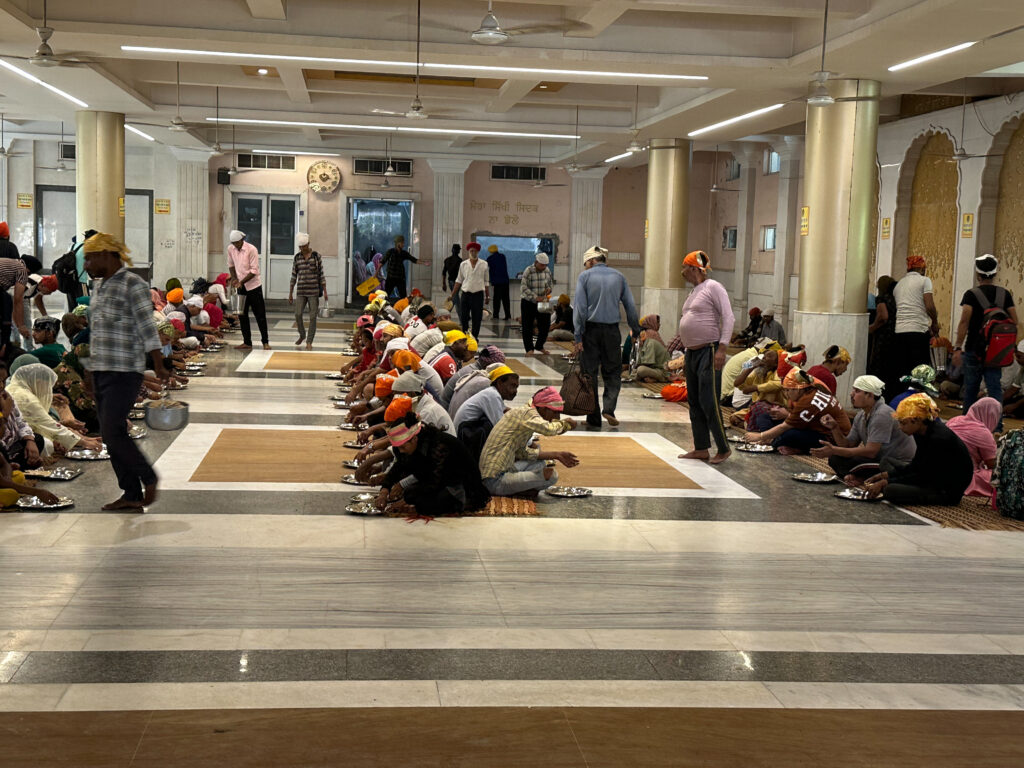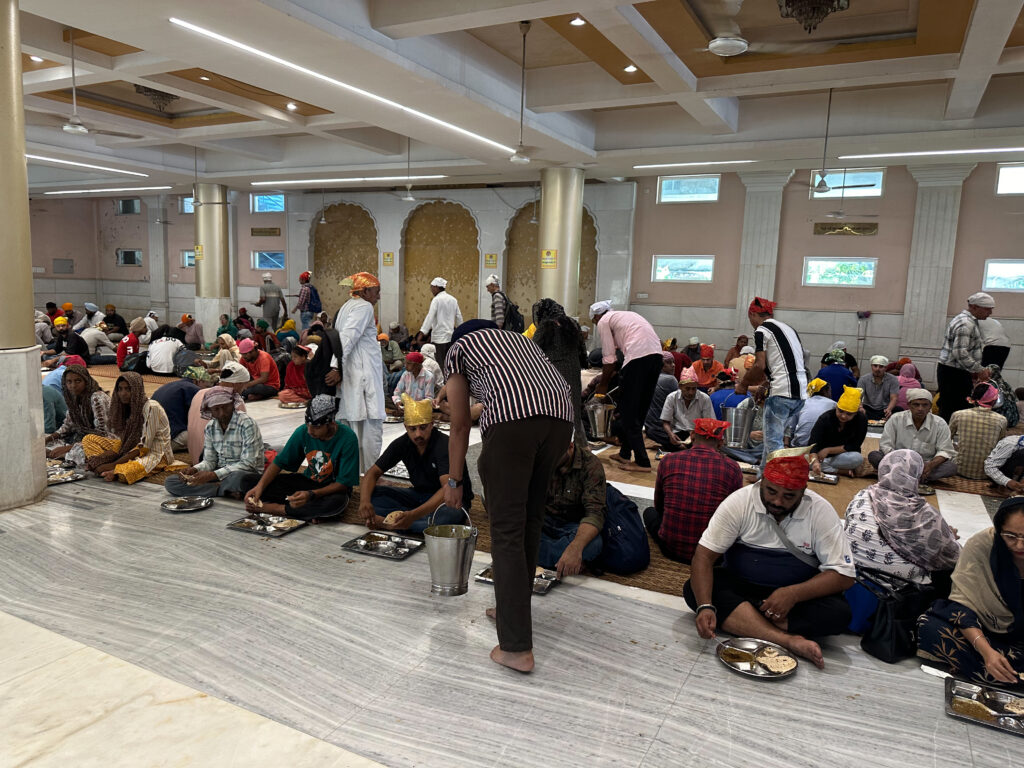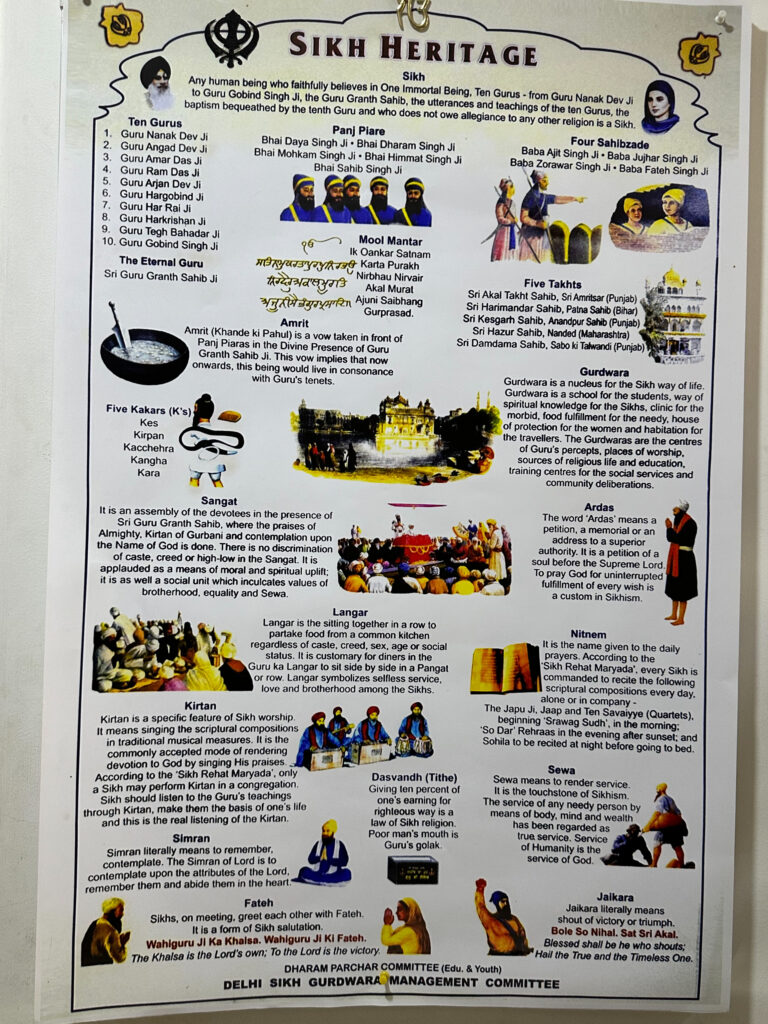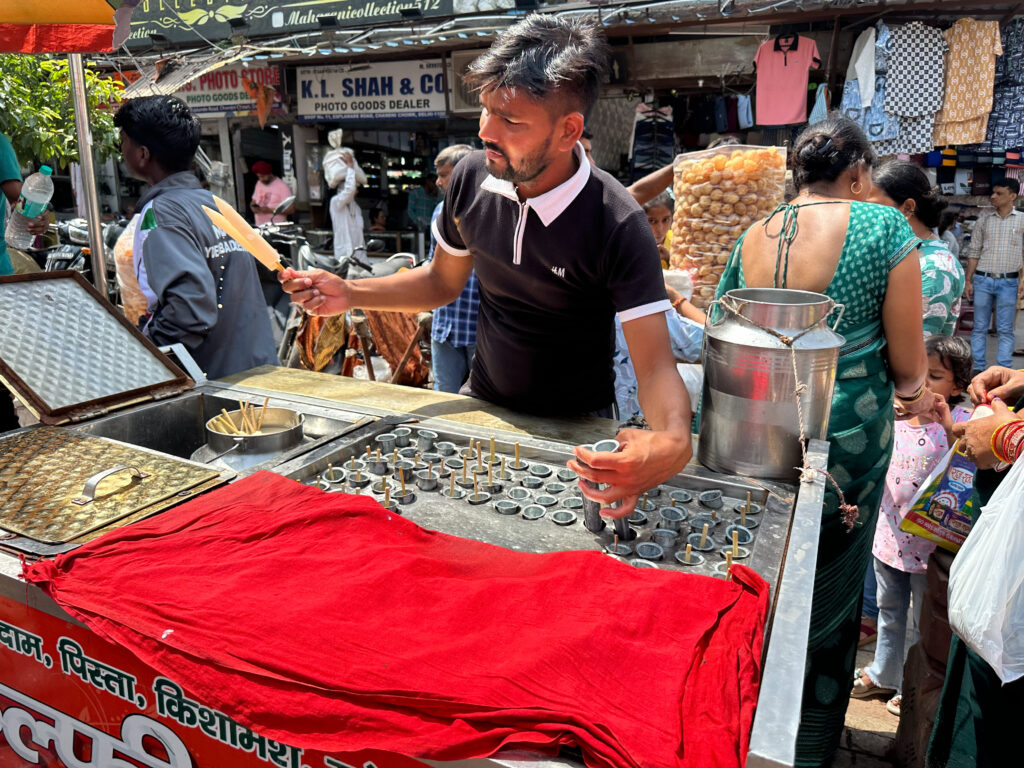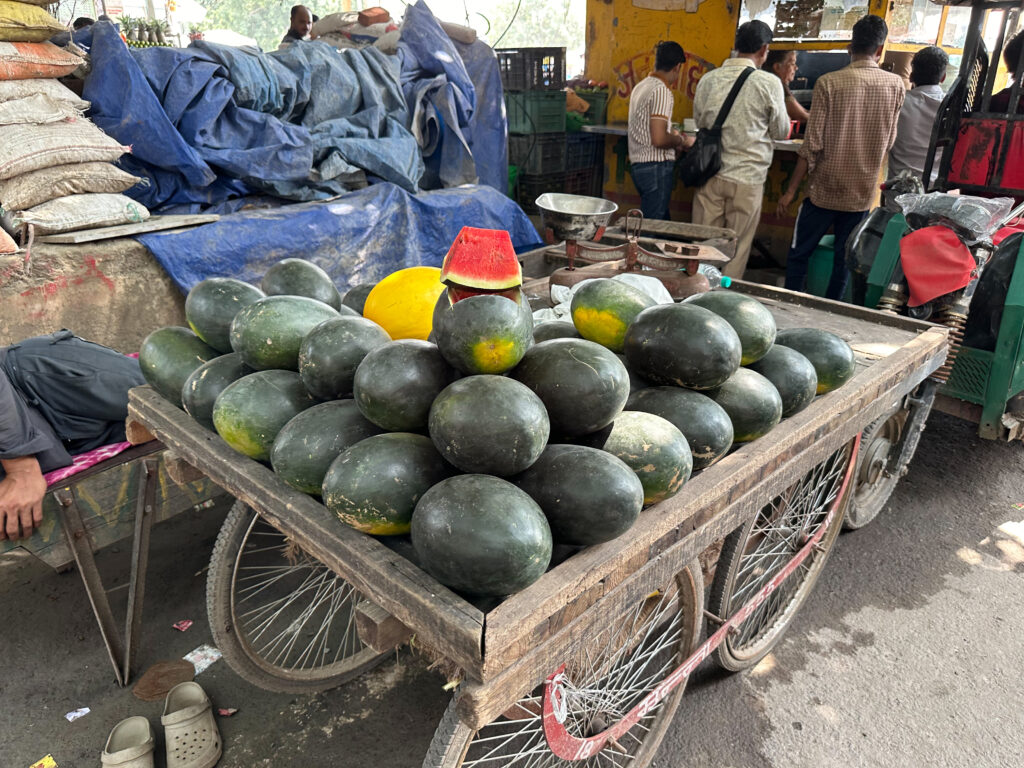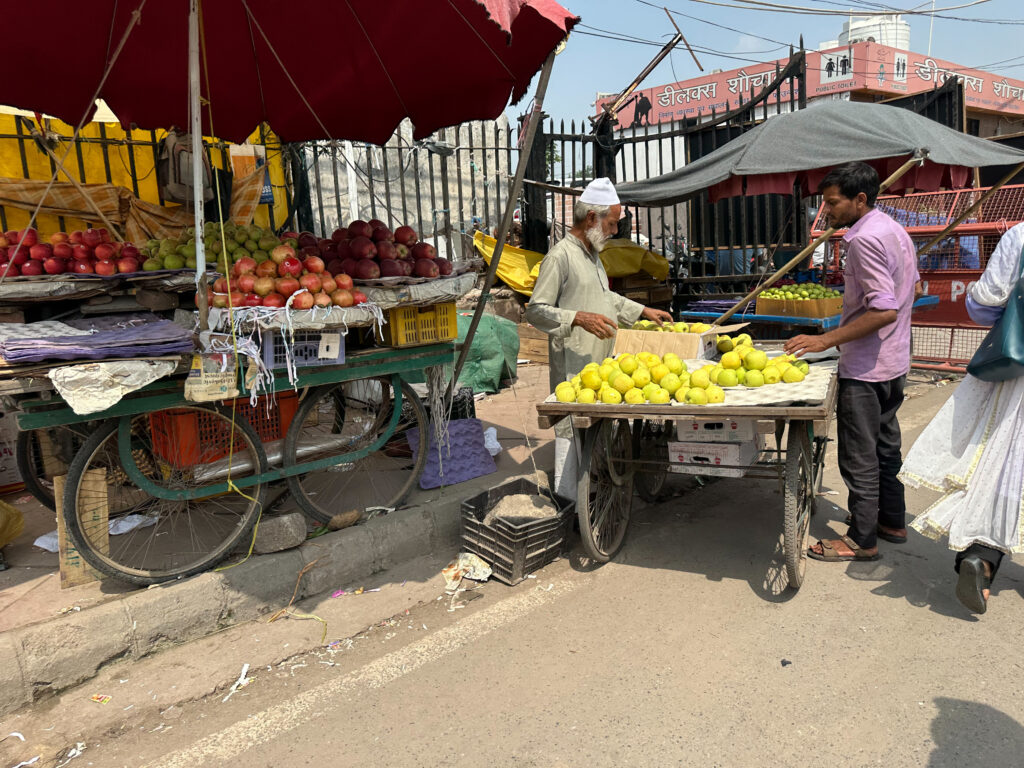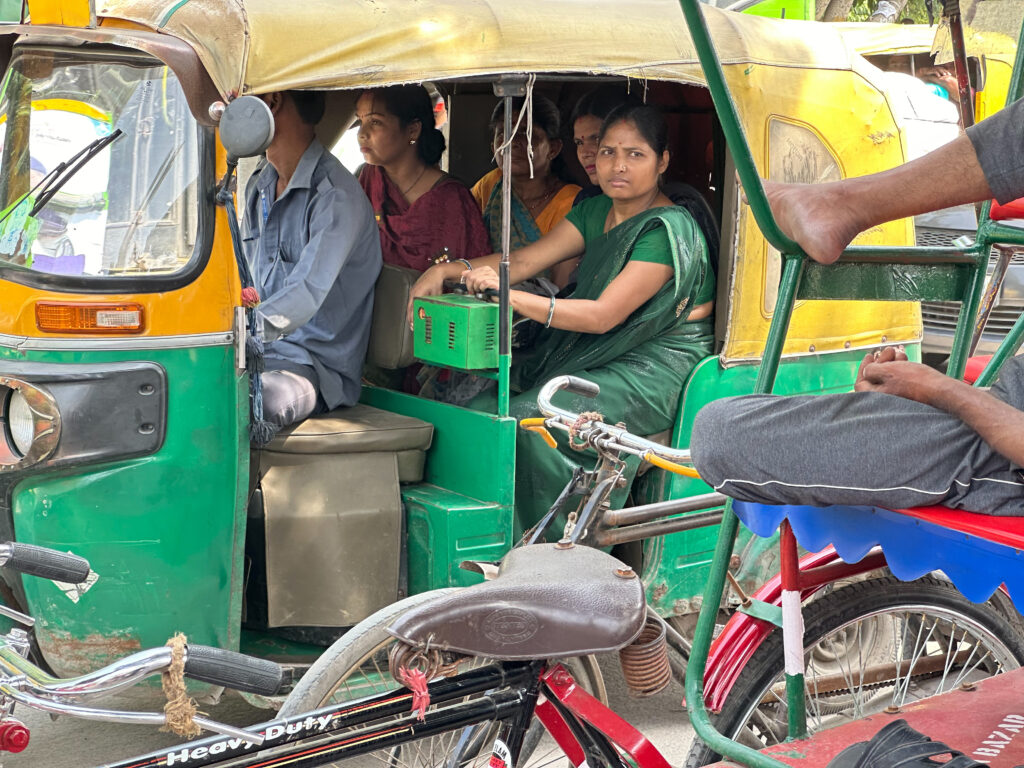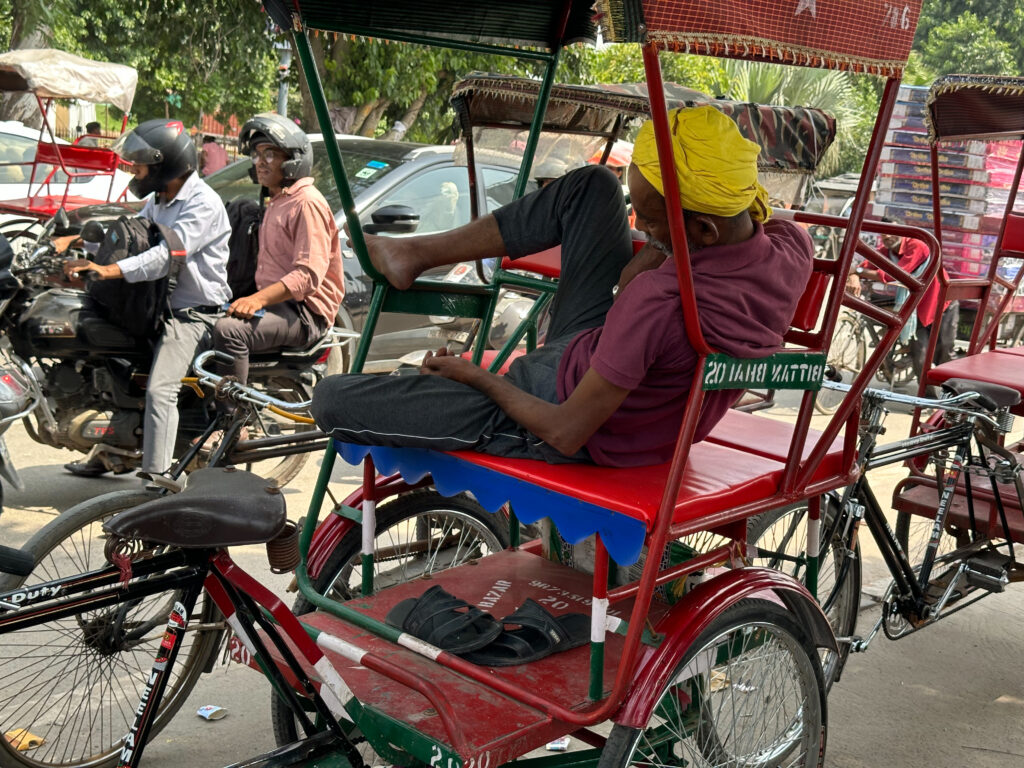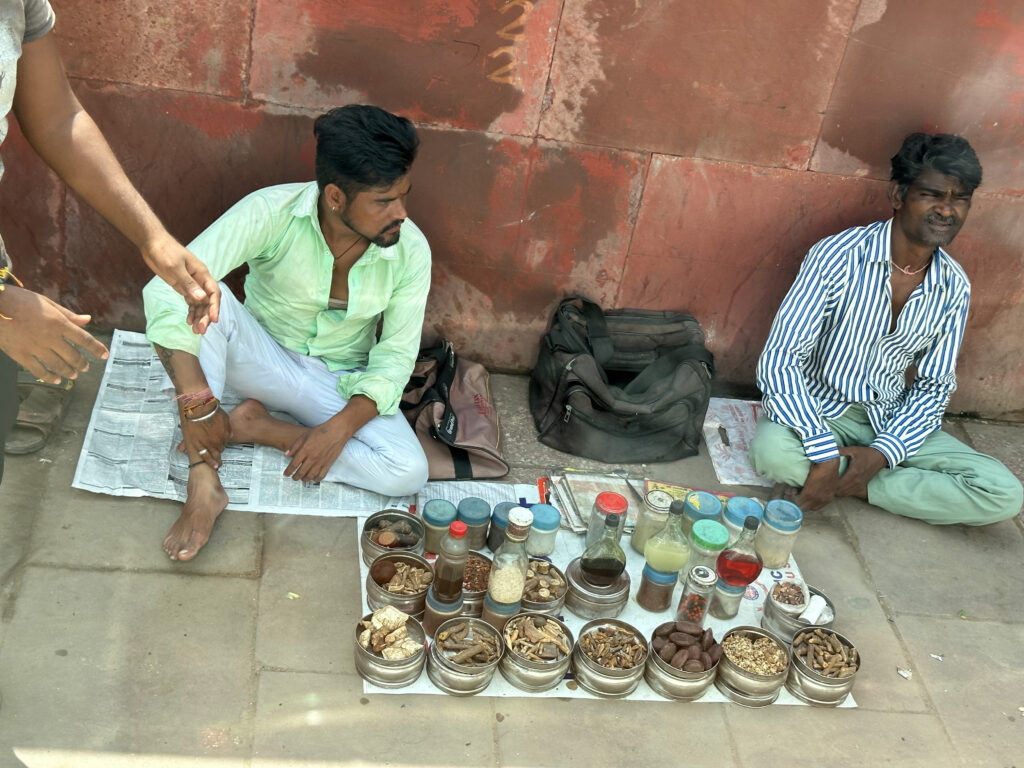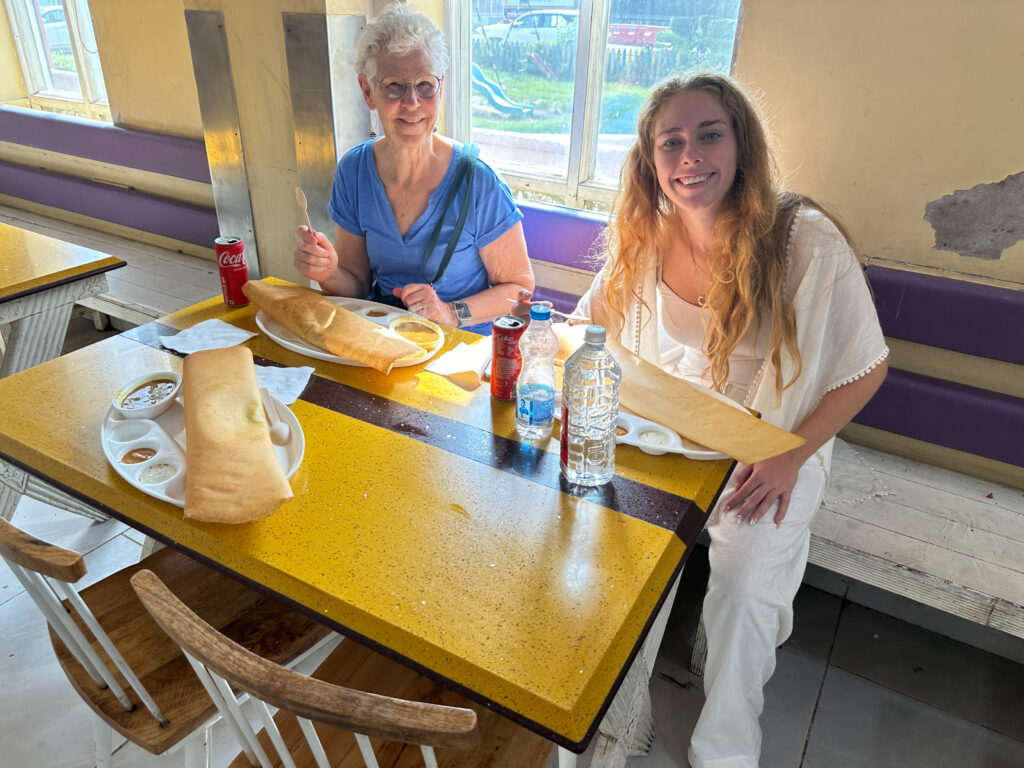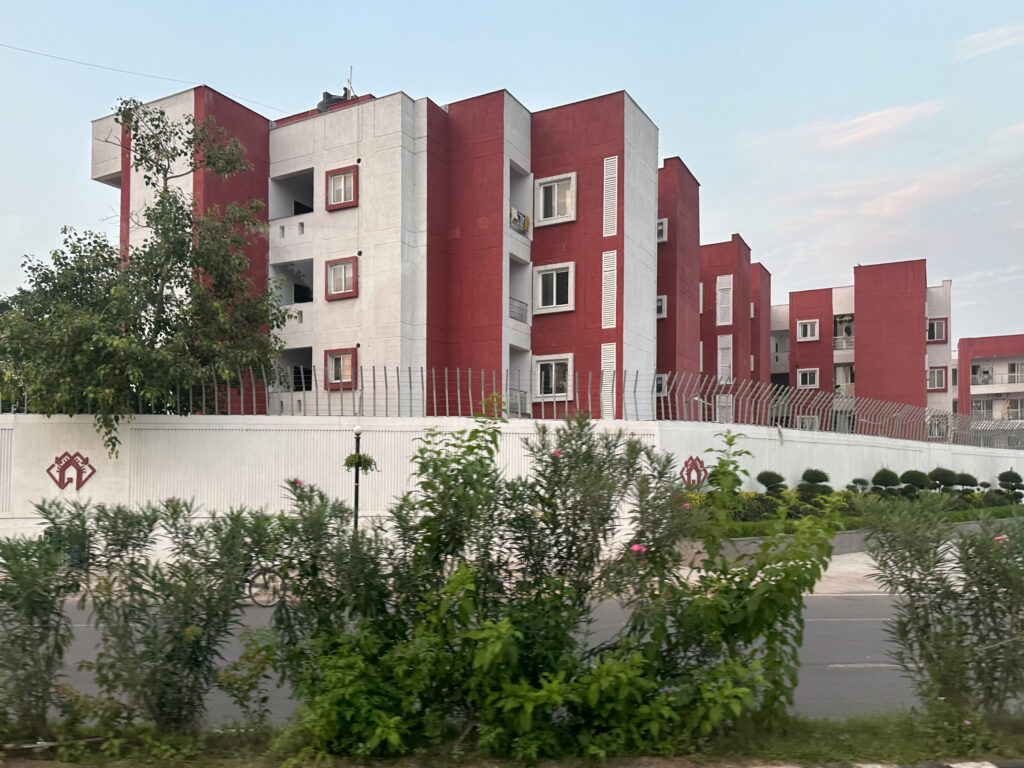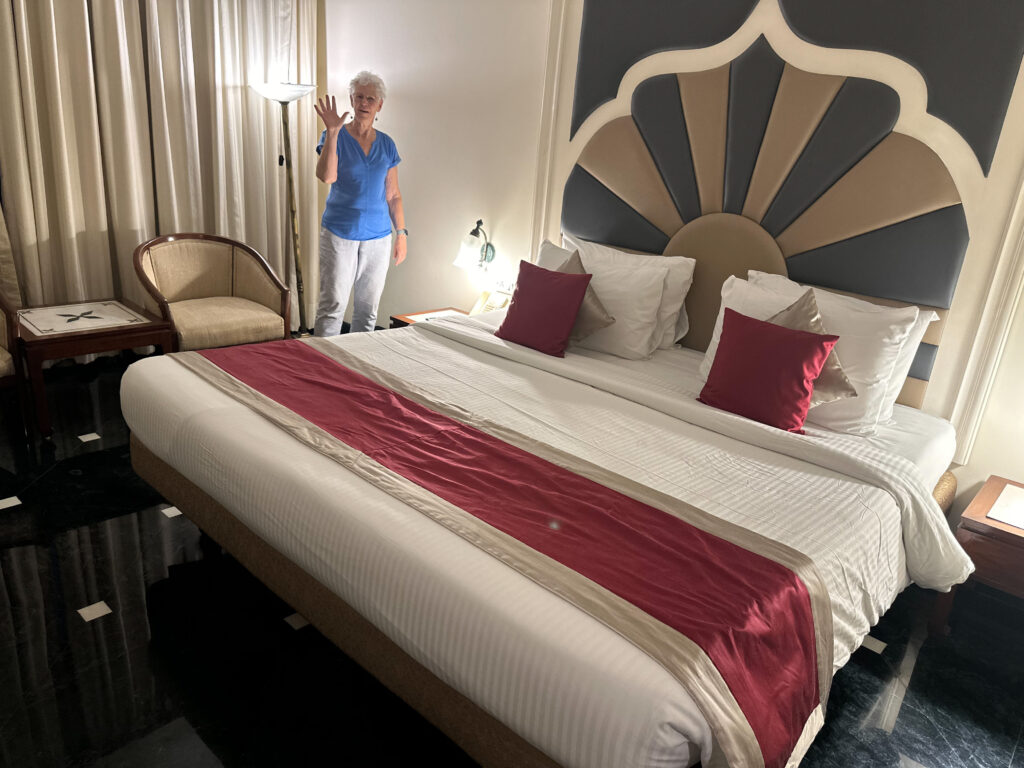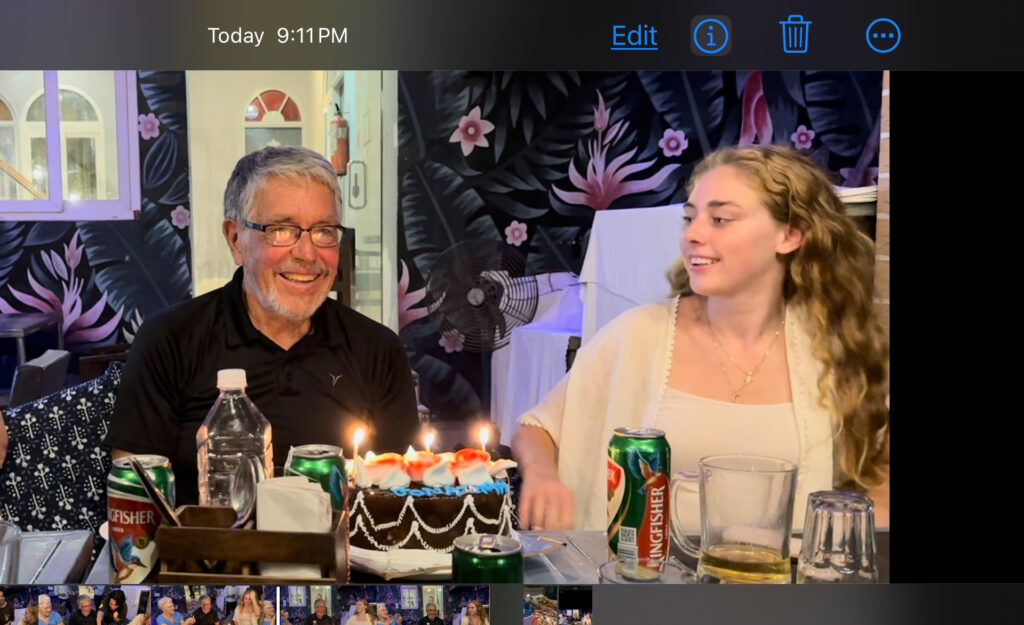One day to gain an appreciation of a sprawling metropolis of 25 million Hindis, Muslims, Sikhs, Buddhist and other religions. A city of traffic, incessant noice, strange odors. A mix of first, second and third-world economies.
|
Our first experience today was a brief tour of the Pahargaanj. District market area of New Delhi with out guide, Fukran, representative of the Salaam Baalak Trust. Yeah, sure, a walking tour of a marketplace. Big deal. Done that in lots of places. But never with a tour guide who, at 9 years of age, left his abusive home and abusive school Kolkata in Bengal State to live on the streets of Delhi. He climbed a tree, jumped over a wall, walked several miles to the train station and somehow boarded a train to Delhi. “I thought I could become a Bollywood movie star,” dreamed the nine-year old. |
Nine years old. Living on a railroad platform. Hustling bottles and cans for recycling money. Can you imagine? I can’t.
After a year he was taken in by the Salaam Baalak Trust, given food, housing and education. But not at first. A street urchin friend told him, “Don’t go with that social worker. He’ll eat you!” “Hey, I was only 10. What did I know?” The social worker persisted, bringing him cookies and crackers. “It was the crackers that won me over. “
Now, 10 years later, he’s in college studying 3-D graphic design. He’s doing tour guiding for the Salaam Baalak Trust because, he says, “I’m kind of a nerd and want to become more sociable.” If the graphics stuff doesn’t work out he can fall back on being a very sociable and well informed tour guide.
The Salaam Baalak Trusthas 4,000 employees serving 11,000 street kids. And it’s one of several such organizations working in India.
Next up, a stop a the Jama Masjid Muslim mosque, the largest in India, with room for 25,000 worshippers or more. It was built in the 17th century by the then most powerful ruler in India. At the time it was in the New Delhi created by the king. Today it’s in what the British called Old Delhi after they had built New Delhi in the 19th century.
From the mosque we walked through a most interesting market thoroughfare. Yes, I know, I just said market streets are a dime a dozen, but this walk was a marketplace on steroids, or maybe I should say a marketplace on really spicy curry. I’ll let the pictures do the talking.
Our final Delhi stop was at the Gurdwara SiS Ganj Sahib, a Sikh temple. A brief history lesson is needed to understand Sikhism. Sorry.
To my simple mind, India history has four eras.
1. From the beginning of human time, the Hindu religion evolved and by 1000 CE the region now called India was governed by hundreds of kingdoms, each with an overlord who extracted tribute from his subjects. Countless wars were fought between kingdoms as one king tried to extend his realm, thereby increasing his revenues. Countless times someone within a kingdom, usually a son, uncle or cousin, would overthrow the monarch.
2. Around 1000 CE Muslim invaders from Afghanistan, intent on spreading the word of Mohammad started invading through the Khyber Pass, the only opening in India’s otherwise impregnable geographical boundaries: Himalayan Mountains to the north and oceans elsewhere. Hindi soldiers tried to defend against the invaders but before long the Muslim- based Mogul empire ruled the Indian subcontinent.
3. Actually, the Moguls never ruled completely. There were five hundred or more kingdoms with the same inter- and intra-kingdom warfare. Beginning in 1600 the English, Portuguese, French and others established trading operations. By the 19th century Britain ruled the roost.
4. The British granted India its independence, but not until it had given Muslim-dominant Pakistan its independence as well. So India has had self governance, from Mahatma Gandhi to Modi, just as long as I have been alive.
Oh yes, the Sikhs. The fighters protecting the Hindu kingdoms from invading Muslims were chosen for their physical attributes. In fact, the need for protection united kingdoms that otherwise might have gone to war. Soldiers were required to a) never cut their hair or beards; b) carry a weapon at all times; c) carry a shield at all times, at least a device protecting the forearm; d) carry a comb to tame the long hair and; e) wear boxer-style briefs. Soldiers wore turbans to house all the long hair.
Life for soldiers was strenuous. One soldiers took up meditation as a way to relieve the stress of soldering. From that the Sikh religion developed. Today, Sikhs wear turbans, have trimmed beards and wear a bracelet in place of the forearm guard. Sikhs make up less than 2% of India’s population.
We visited a Sikh temple and observed Sikh believers worshiping in a sanctuary that included much gold decoration and live musical instrumentalists and singers. Later we visited a kitchen that prepared meals for believers. The meal is a sacred rite, one significance being that all are served equally, no matter that person’s caste or position in society.
Next, a six-hour bus ride to Agra, home of the Taj Mahal. We stopped for lunch around 2:30 PM at a fast food plaza just off the highway. Burger King, Starbucks and Subway were there but the three of us opted for the Southern Indian counter where we ordered masala dosa. It’s a three foot long paper thin tube with a dab of potato concoction inside with three mild sauces. Tasty enough but nothing to give Burger King competitive heartburn.
We didn’t make it to Agra in time to see the Baby Taj. We’ll save that for tomorrow. Dinner was at a nearby rooftop restaurant. The three of us had variations on chicken in mild sauces. Plus, a birthday cake!
By the way, there are two basic lies told on every trip: “It’s quite nearby”; and “It’s not very spicy.”
We’re on the bus at 5 AM to be at the Taj Mahal for sunrise and, hopefully, to beat the crowds. Then back to the hotel for a siesta and afternoon Baby Taj activities.
Sorry, no pictures tonight but I’ll post today’s after we get back from the Taj. It’s going on 11 so off to bed!
Here, finally, are the pictures:

